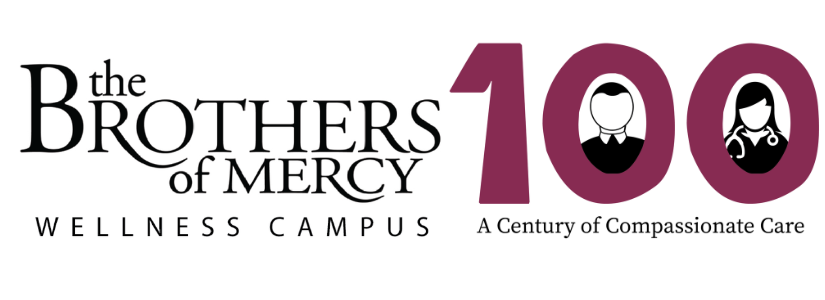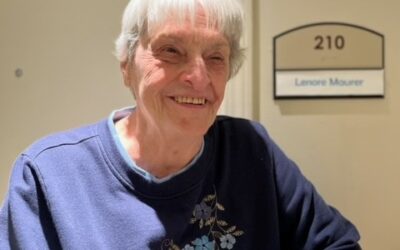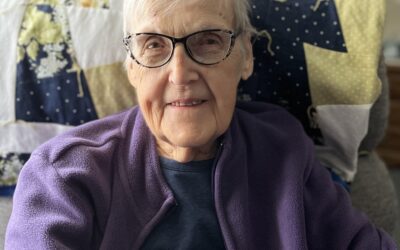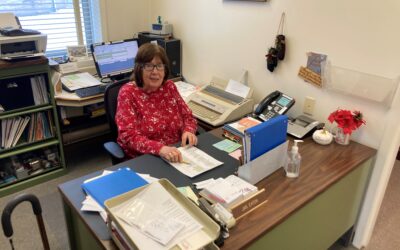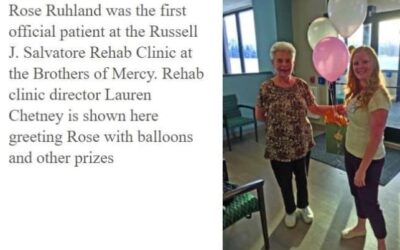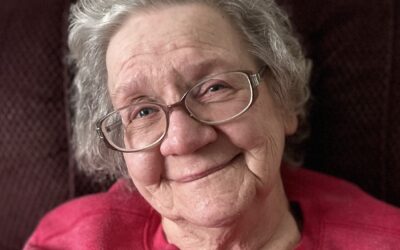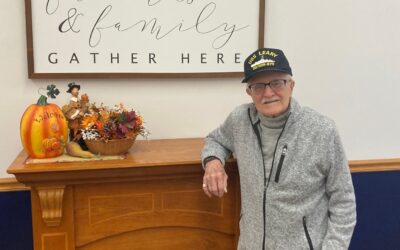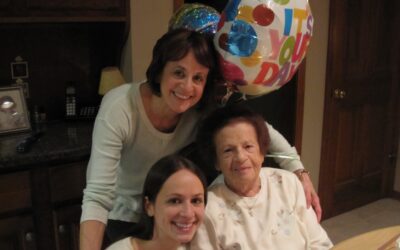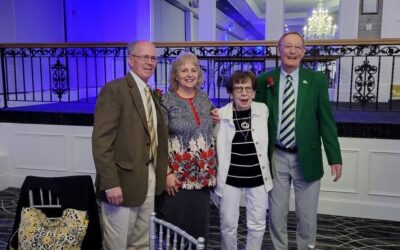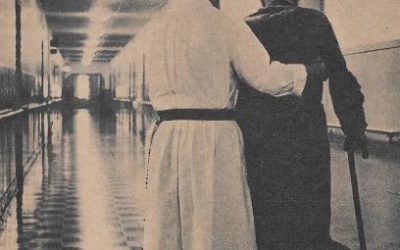Celebrating a Century of
Compassionate Care
Centennial Blog:
Getting to Know Lenore Maurer at Sacred Heart Home
Q: Where did you grow up? Buffalo Q: What was your hometown before coming to Sacred Heart Home?...
Profile of Margaret “Mary” Honer, Sacred Heart Home Resident
Q: Where did you grow up? What was your hometown before coming to Sacred Heart Home? I grew up in...
Jan Eaton, Trier Woods Office Manager, Celebrates 40 Years on Campus!
Do you remember your first day of work on campus? It was Feb. 6, 1984. I have worked in this...
Meet Rose ~ The First Client at Our Outpatient Therapy Clinic in Jan. 2018!
Q: How did you hear about our clinic? I was anxious for the clinic to open in 2018. In October...
Q&A With Bonnie Tunmore, Outpatient Therapy Clinic Client
Q: What made you choose The Brothers of Mercy Outpatient Therapy Clinic for rehab? A: I was...
Profile of Barbara Kobos, Sacred Heart Home Resident
What was your hometown before coming to Sacred Heart Home? I grew up on the East side of Buffalo...
Ben Madonia: Proud Veteran & Musician Who is at Home in the Trier Woods Apartments
Within The Brothers of Mercy Trier Woods independent living apartments, there are several...
Lorraine Probst, Foundation Advisory Council Member, Reflects on Her Mother’s Journey in Skilled Nursing Center
Lorraine Probst is a retired clinical social worker who specialized in children and families. She...
Recognizing Our Volunteers at the Skilled Nursing & Rehab Center
The Brothers of Mercy Nursing and Rehab Center is genuinely blessed to have more than 35 active...
Outpatient Therapy Clinic Always Ready to Get You Back on Track
The community has always recognized The Brothers of Mercy as a premier destination for short-term...
The Brothers of Mercy Campus Foundation
Foundation (noun): A body or ground upon which something is built. The Campus Foundation at The...
The History of The Brothers of Mercy in Western New York
The Brothers of Mercy’s origins stem from one humble mission: to honor Christ through service to...
Centennial Interviews with The Brothers
Brother Edmund
What are your earliest memories and activities from when you became a Brother on campus?
I went to Father Baker for high school, and after high school I joined the Navy and served for two-and-a-half years from 1969-1972. I traveled a lot while I was in the Navy to places such as Puerto Rico, Malta, Naples and Rome. Once I was out of the service, I visited the Brothers two or three times before I was accepted in 1978, which happened to be the same date that Pope John Paul II was chosen to be our Pope.
In between the service and officially becoming a Brother, I worked at Buffalo General and St Louis Church. When I became a Brother, the Nursing Home was already in existence. I was a CNA at the nursing home where I could only take care of male patients at that time. I left the Clarence Campus in 1982 to begin work at their Jewett Parkway location in Buffalo, doing in-home care, where Brother Fidelis was my superior. I did this until 1995 and came back to the Clarence Campus where I have been since.
What was a day in the life of a Brother when you began here?
I would wake up, attend mass and then work from 7:30 a.m. – 4 p.m. After work, I would do some chores and relax.
What is something you are most proud of?
My career in In-Home nursing. However it was always difficult to leave my patients knowing they were passing away.
What do you see the future looking like for Brothers of Mercy in the next 100 years?
I would like to see them prosper and carry on the best we can.
What impact do you believe Brothers of Mercy has had on the community and how has it influenced the quality of senior care?
We have always put our patients and residents first. The family-like atmosphere is strong here and helps our purpose of providing kind and compassionate care.
Brother Fidelis
What are your earliest memories and activities from when you became a Brother on campus?
I am originally from North Tonawanda and after high school I decided to enter the Army. After my service, I decided to “give it a try and if it’s for me great, and if not that’s ok.” Turns out it was for me, and I became a Brother in my early 20s.
How many Brothers were there in the beginning?
I started in downtown Buffalo and did home care. I was a nurse and would ride my bike, as did all the Brothers, through any kind of weather, to care for our patients. After a while, I came out to Clarence and worked in our Nursing Home as a nurse.
What was a day in the life of a Brother when you began here?
I would wake up, attend Mass and then work a full shift. After work, all the Brothers would get together, talk and relax
What is something you are most proud of?
The growth we’ve seen and our campus itself.
What was the Founders mentality, their beliefs and goals?
To provide help and care for those who really need it.
What do you see the future looking like for Brothers of Mercy in the next 100 years?
When I began, young men were in the spirit of helping, giving and upholding our mission. Times have changed a lot of things. I don’t think the campus will grow any more than it has, and a lot has to do with the fact that young people don’t seem to have the same passion we did back then as Brothers.
What impact do you believe Brothers of Mercy has had on the community and how has it influenced the quality of senior care?
When people are sick and dying, the Brothers were the pioneers in this type of compassionate senior care.
Fun Facts:
- Brother Fidelis loved to dance, and his favorite was doing the Polka!
- Brother Fidelis was in charge of Spiritual Care in the Nursing Home for many years.
- Brother Fidelis served in the Army and was stationed in Germany
Brother Ken
What are your earliest memories and activities from when you became a Brother on campus?
I came to the campus at the age of 35. I visited in 1995 and met with Brother Jude and Brother Terrence and then moved here in 1996 and lived at the White House. When I was asked how I was doing by Brother Jude, I replied that it was going ok, and Brother Jude replied, “You are not here to have fun. You are here to save your soul.”
What characteristics would you want to be remembered by as our current Brother Superior?
I want to be fair in listening to the Brothers and taking care of the Brothers, and I always listen. I like to look at the good and bad of previous leaders and try to emulate the good and change the bad. I pride myself on treating people fairly and not barking at them. You don’t treat everyone the same, you know their strengths and don’t micromanage.
What was a day in the life of a Brother when you began here?
I would begin the day with morning prayer or mass. I was a cook and dietary aide at Sacred Heart Home. When I was not working, I would go to class for spiritual learning. I would end my day with evening prayer and the rosary. I would look forward to community night, which was once a month when I was able to go out to eat.
What is something you are most proud of?
I am proud of my longevity here on campus after 27 years and still going.
What do you see the future looking like for Brothers of Mercy in the next 100 years?
I feel that come 10 to 20 years from now, there will no longer be Brothers on campus. I anticipate that even with the absence of the Brothers, the mission and value system will live on through the years. Brothers of Mercy will continue to adapt to the industry changes while maintaining the core values and standards the Brothers have set.
What impact do you believe Brothers of Mercy has had on the community and how has it influenced the quality of senior care?
The Brothers of Mercy is one of the first to have a continuum of care. People on campus receive the same care no matter what the building they are in.
Brother Terrence
What are your earliest memories and activities from when you became a Brother on campus?
When I started here on campus in 1957, I was 19 years old and not a Brother at that time. I was a novice for two years and then took my first vows to become a Brother. I took temporary vows for six years, and then made my final vows in 1963. At that time, the Brothers lived in the White House. My official position was the formation director, and I held that position for six years.
How many Brothers were there when this opened in the very beginning?
There were 30 Brothers on campus when I began. I was in a class of six in training to become a Brother and was the only one from that class that succeeded. During our training, we were put in nursing school, and after I graduated as an RN, I went back and became a COTA as it became obvious there were other rehabilitative needs on campus. I was granted my first vacation after many years of working and was given $40 to spend for my trip. I spent that time with family and was so proud that I was able to bring back the $40. My last 14 years of service were spent as an activities aide in the nursing home.
What was a day in the life of a Brother when you began here?
We began our day with morning prayers and mass. I worked in the kitchen doing dishes, and we would get a coffee break at 10 a.m. There was no eating in between meals as we took a vow of poverty. There was a Brother in charge of cooking all our meals. After working for the day, we would have evening prayers, eat dinner together and then prayers at 9 p.m.
What is something you are most proud of?
I am most proud of the ability to accompany so many people in their sickness and wellness.
What do you see the future looking like for Brothers of Mercy in the next 100 years?
The hope is that all the lay people will carry on the good quality care that each person deserves.
What impact do you believe Brothers of Mercy has had on the community and how has it influenced the quality of senior care?
Brothers of Mercy has always been known for our quality of care. We were pioneers of quality care and that has never faltered over the years. We are also known for doing the work of God.
What Made the U.S. & World News in 1924?
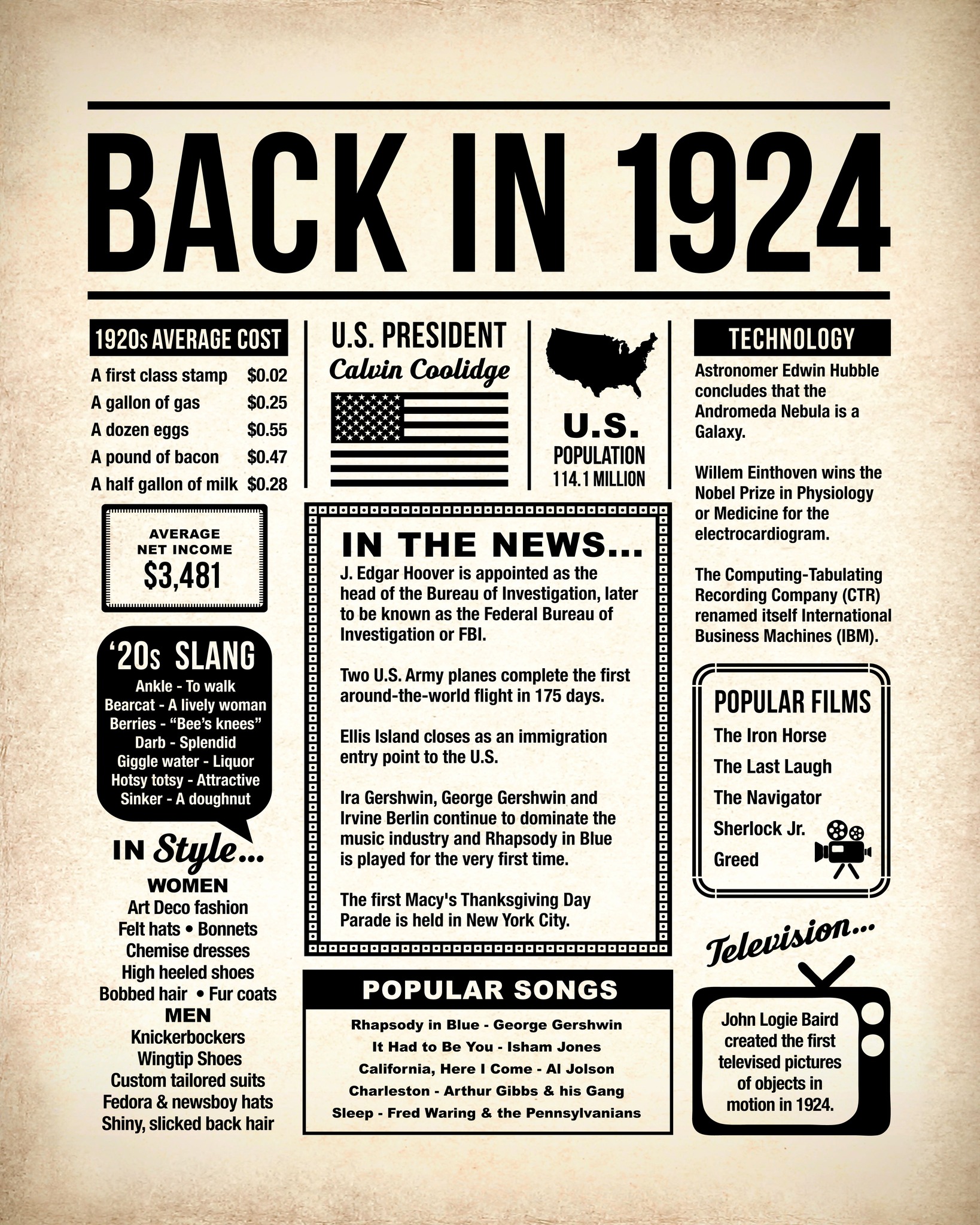
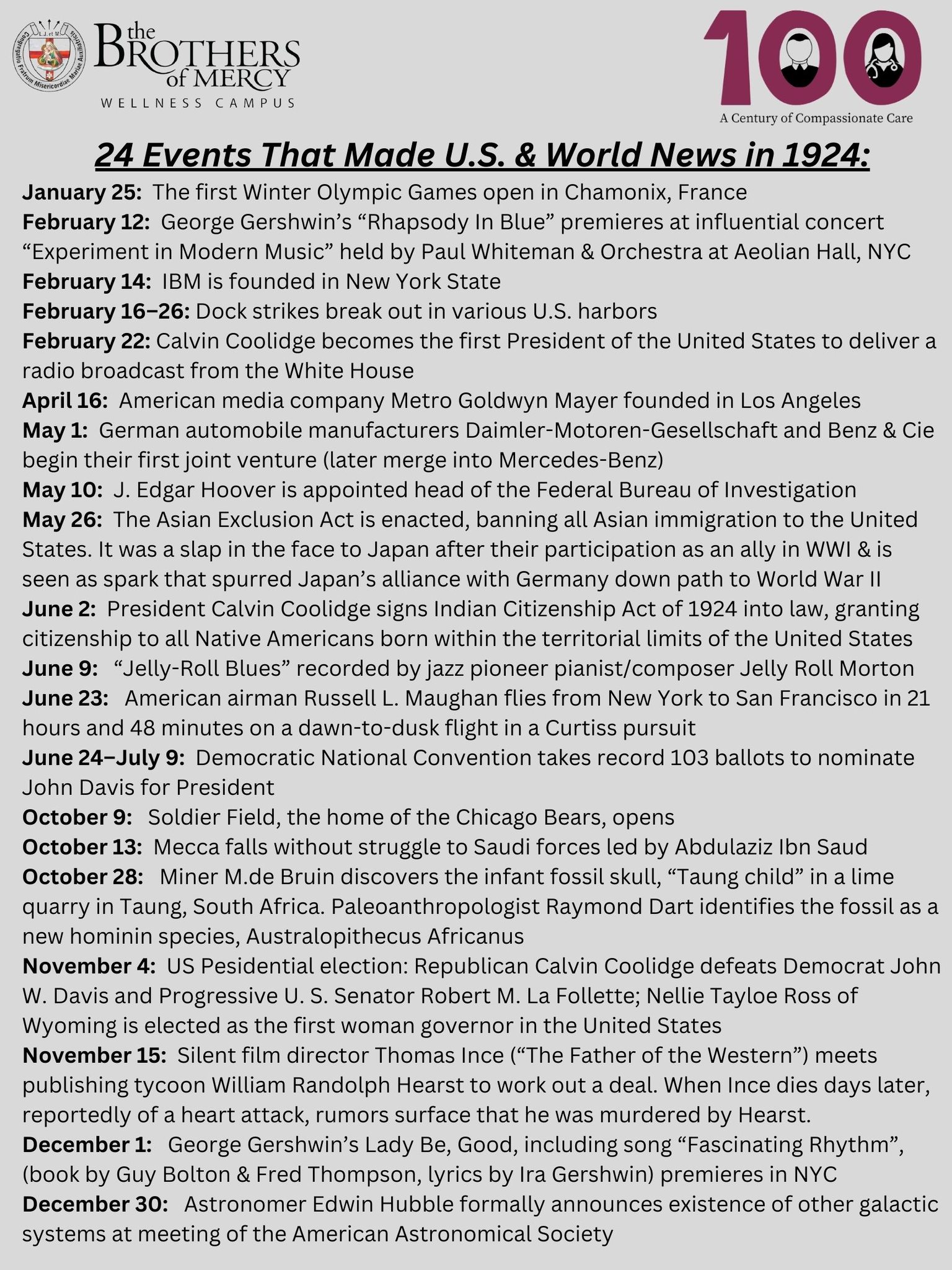
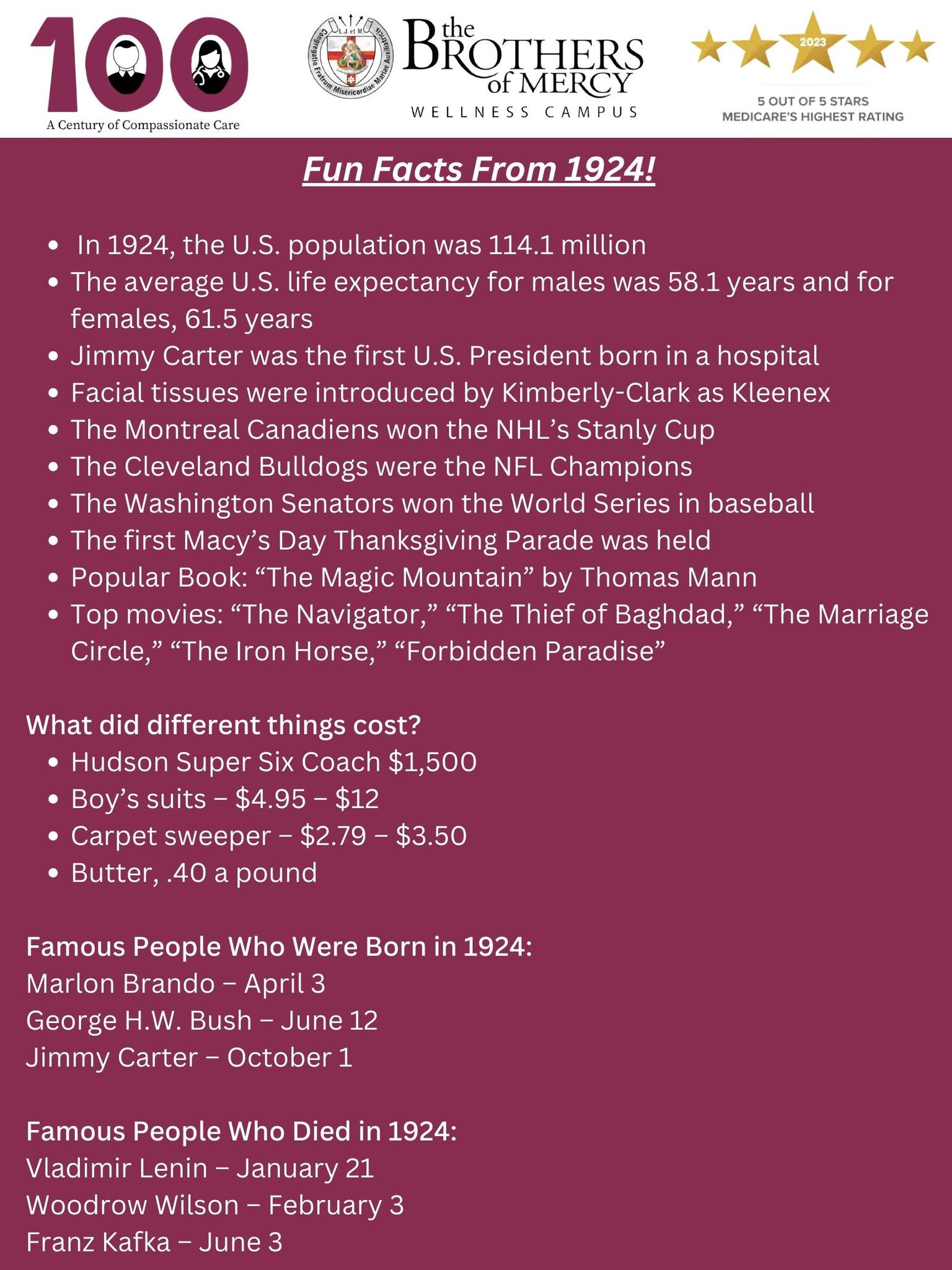
2023-24 Events & Celebrations
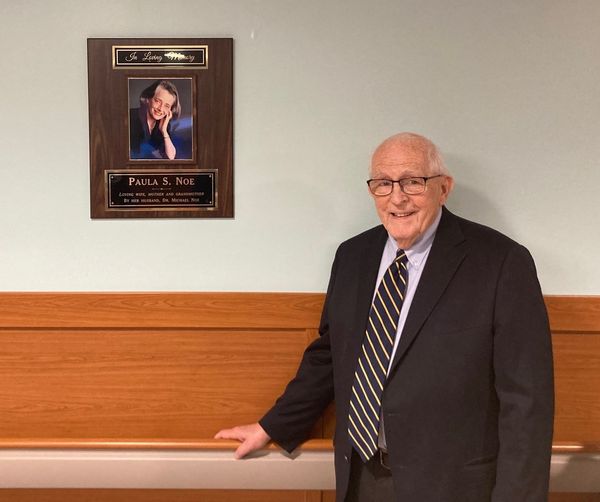
On April 19, staff gathered with Dr. Michael Noe, a member of The Brothers of Mercy Board of Directors, on the 4th floor East Rehab wing in the Skilled Nursing & Rehabilitation Center to unveil a plaque in honor of his wife Paula S. Noe. Thank you Dr. Noe for your generous spirit and leadership!
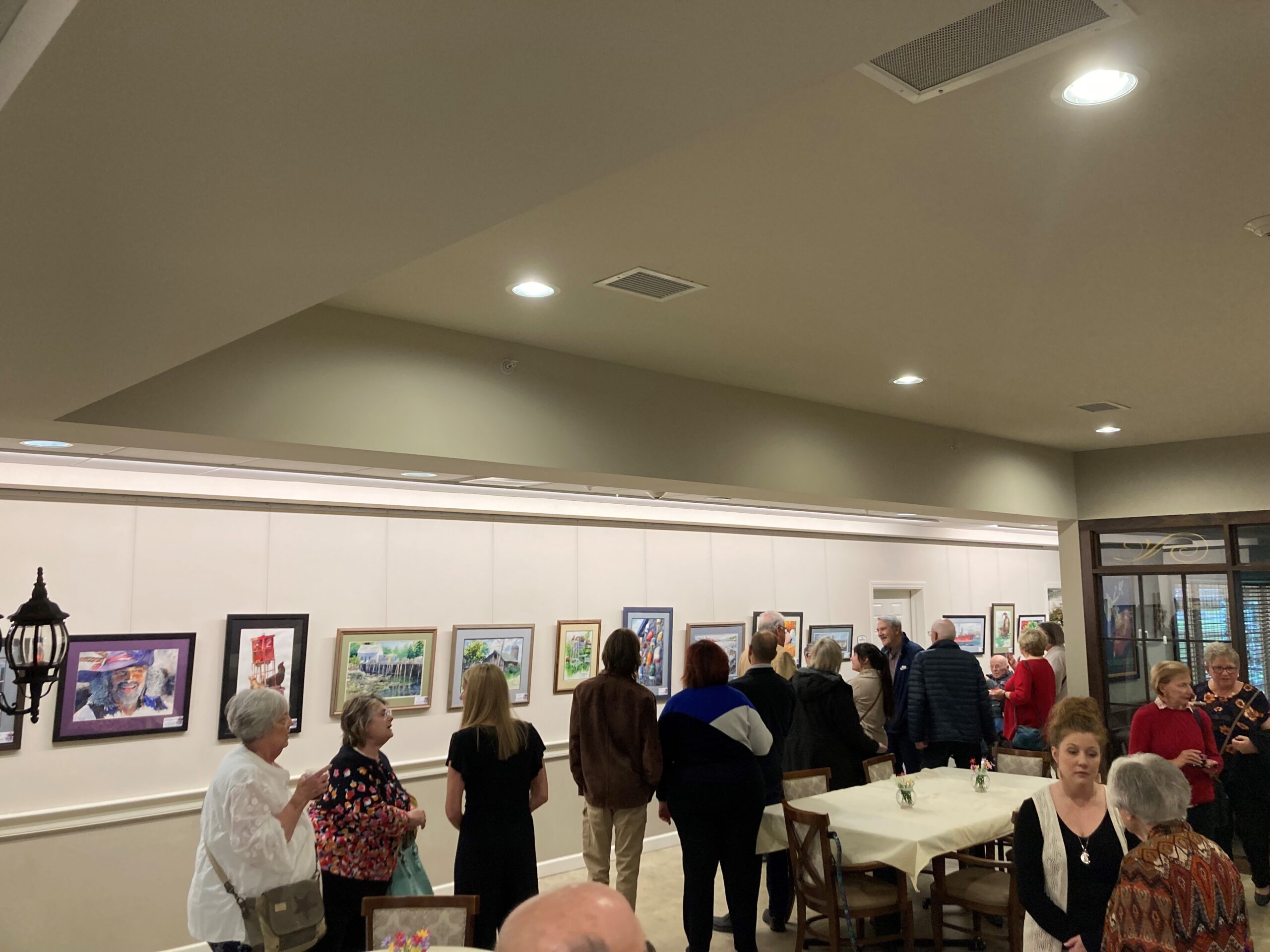
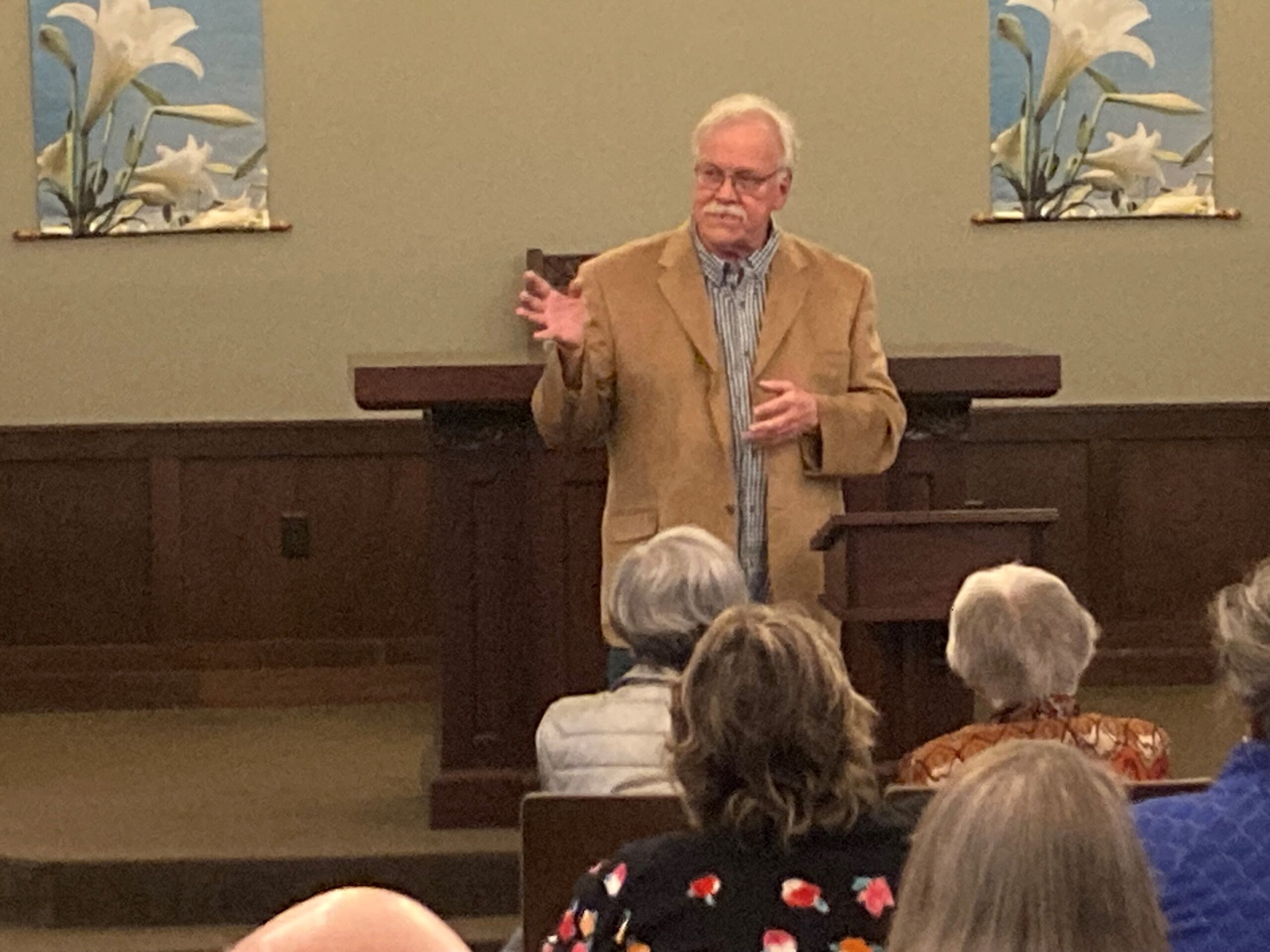
On April 18, the second exhibit called “The Nature of Things” is now open at The Art Gallery at Montabaur Heights! The public is invited to view the gallery daily from 11 a.m.- 3 p.m. It features more than 30 transparent watercolor paintings by Dan Meyer, a Williamsville artist, illustrator and founding member of the Niagara Frontier Watercolor Society. Meyer’s exhibit will be on display through June 30. Gallery visitors can also have lunch between 11 a.m. – 1: 15 p.m. in the Montabaur Heights dining room by calling 716-407-5102 to make a reservation at least 24 hours in advance.
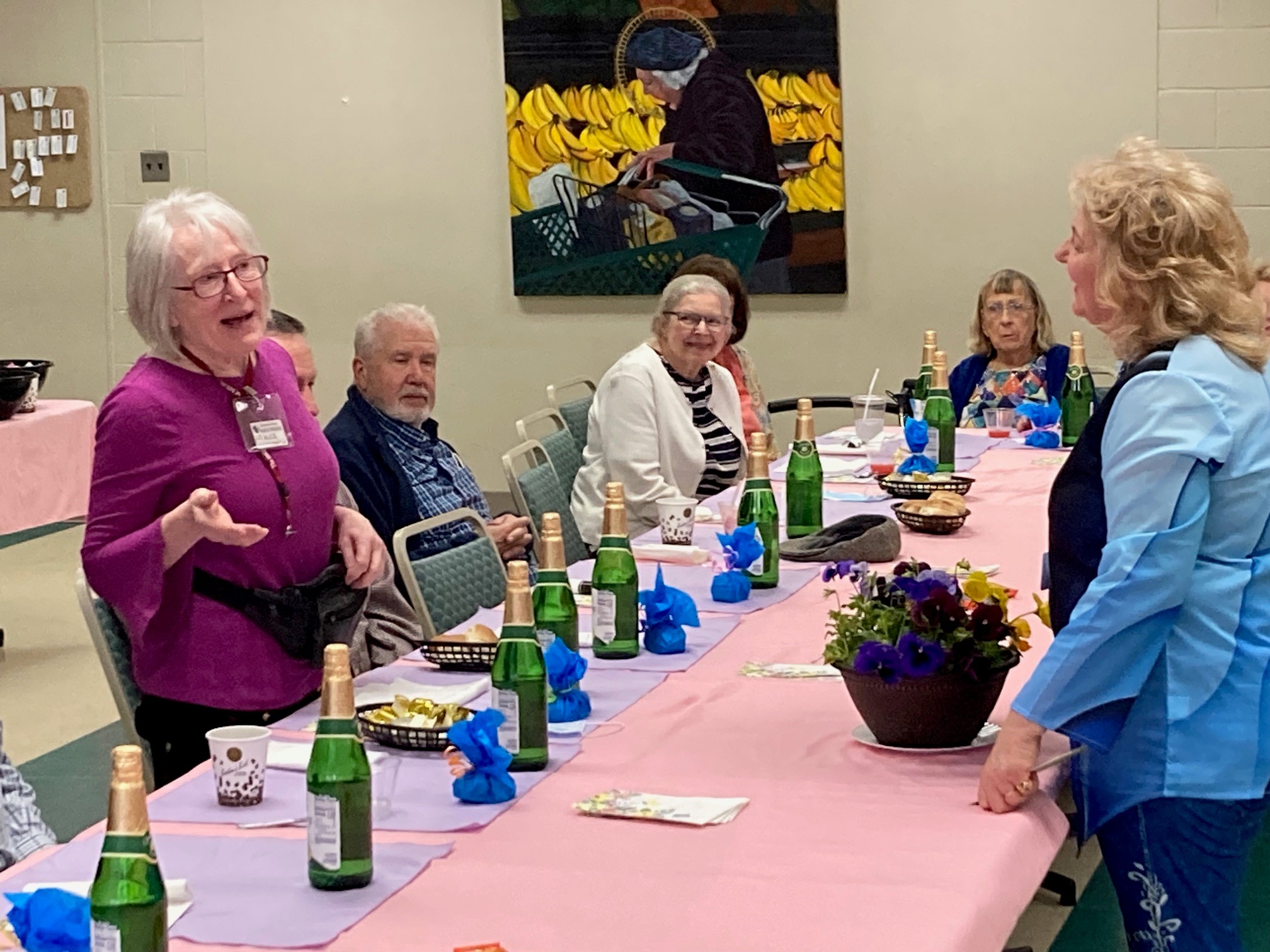
On April 17, staff hosted the annual Volunteer Recognition luncheon at the Skilled Nursing & Rehabilitation Center. Thank you to our volunteers for everything they do to help residents & staff! Congratulations to Alice Sosa (pictured on left) for being named Volunteer of the Year! Since January 2021, she has served more than 700 hours of transporting residents and patients, delivering mail, visiting with residents and assisting at our Campus Foundation special events.
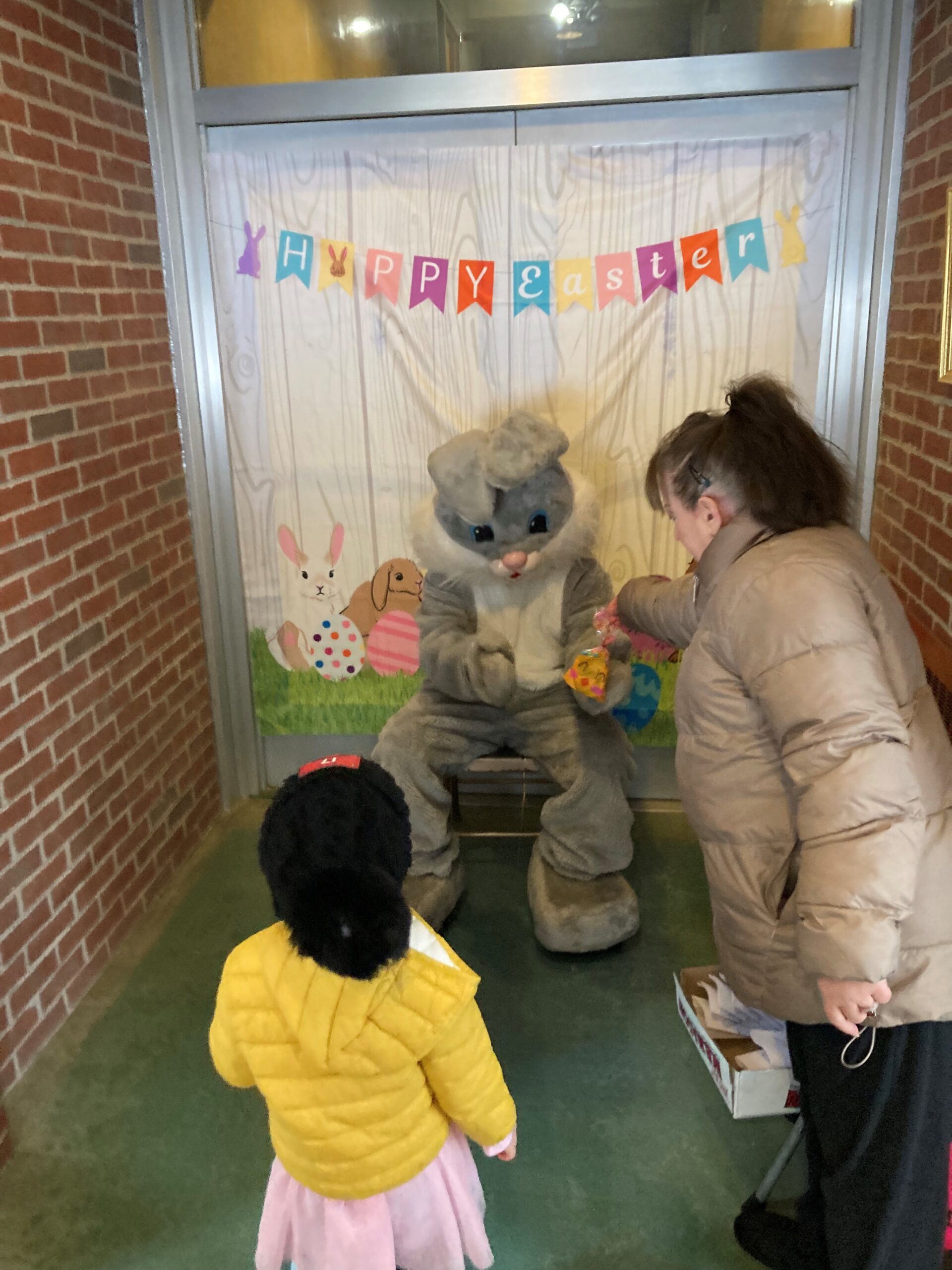

On March 23, the Human Resources Department hosted the third annual community Easter Egg Hunt in front of the former Sacred Heart Home. Despite the snow and 27-degree temperature, many families turned to enjoy the morning’s activities.
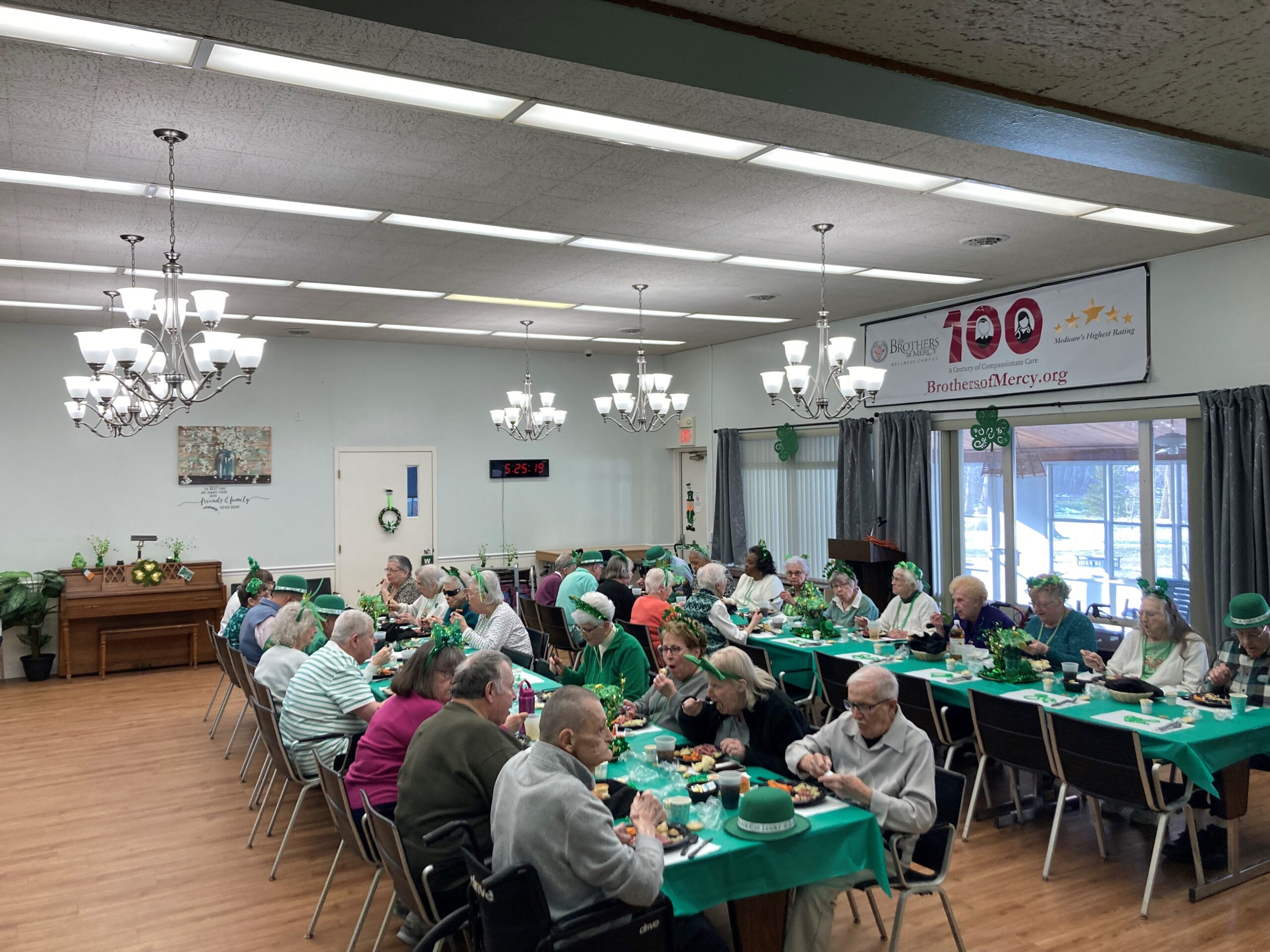
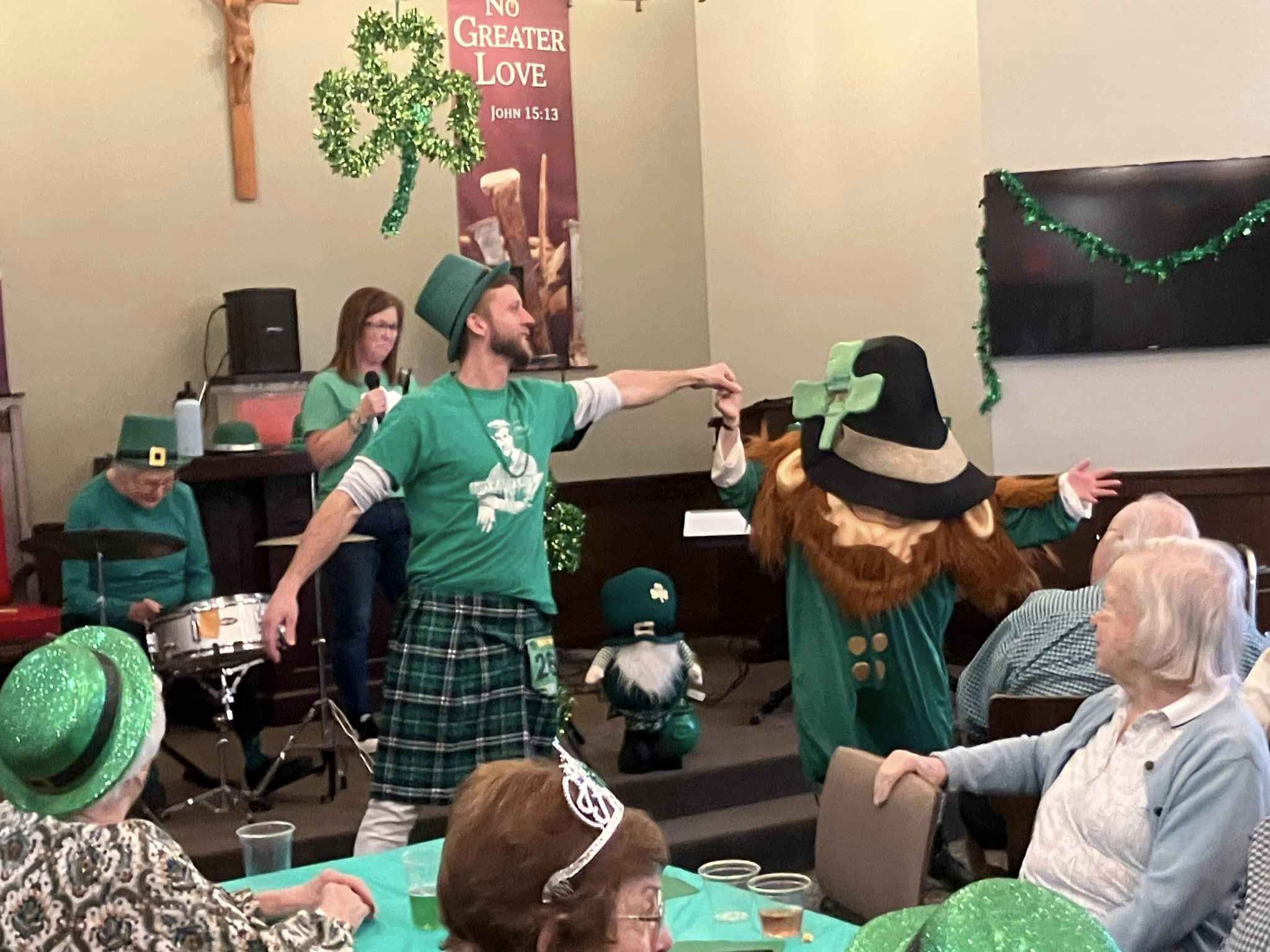
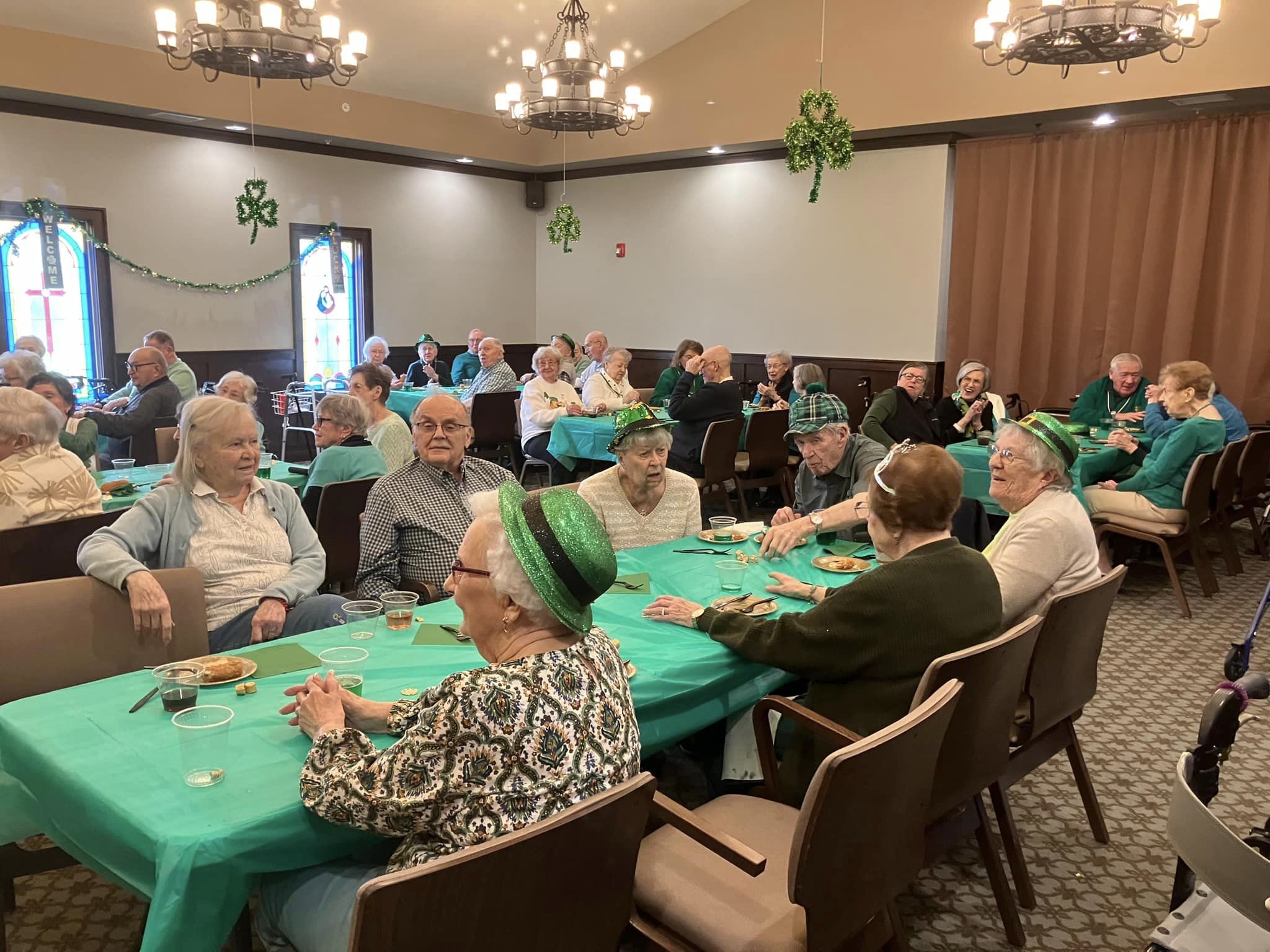
Montabaur Heights & Trier Woods residents enjoyed a great St. Patrick’s Day celebration!
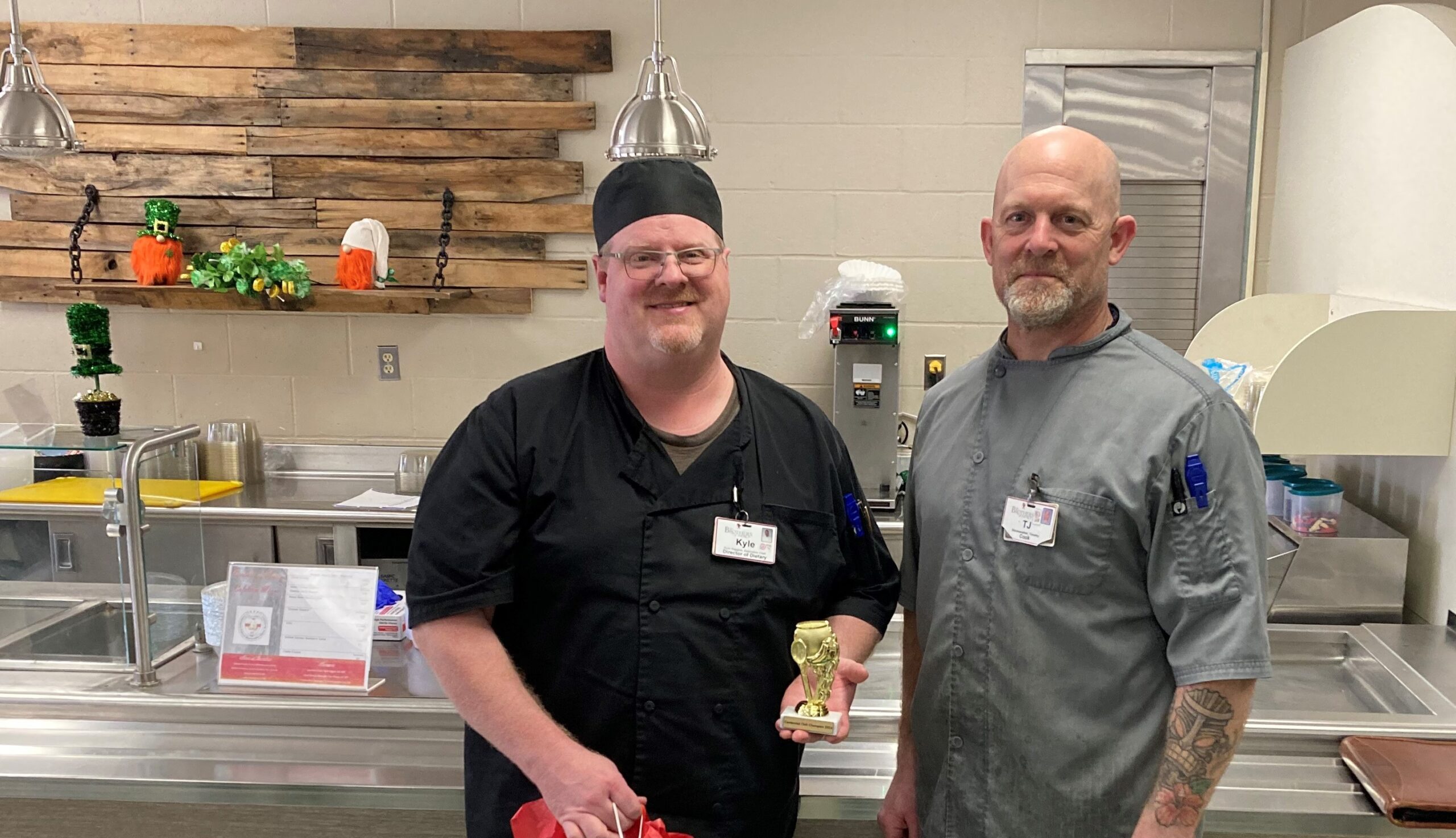
On February 22, staff held a chili competition as part of our monthly Centennial celebration activities. There were entries from every building on campus, and a champion was crowned. The Skilled Nursing & Rehab Center received the most votes for best chili. Congratulations to Kyle Higgins, Executive Chef, and TJ Stockweather, Food Service Supervisor, for making the best batch & winning the trophy!
There is already talk of defending their title with a macaroni & cheese contest this fall…


On February 8, The Art Gallery at Montabaur Heights opened with the inaugural “Legacy Artists” exhibit. there will be a new exhibit every quarter with a different theme. The gallery is open to the public every day from 11 a.m. – 3 p.m.
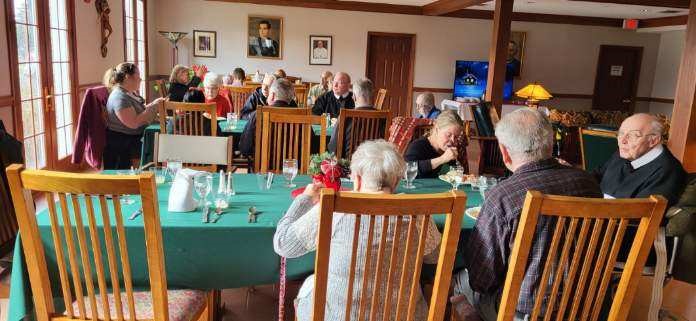
On December 14, The Brothers of Mercy hosted the annual Spiritual Care Volunteer luncheon to celebrate those who so freely give of themselves to enrich our campus residents! Father Walt, Father Gene and Deacon Steve joined The Brothers in thanking the volunteers for their generosity and dedication throughout the year.
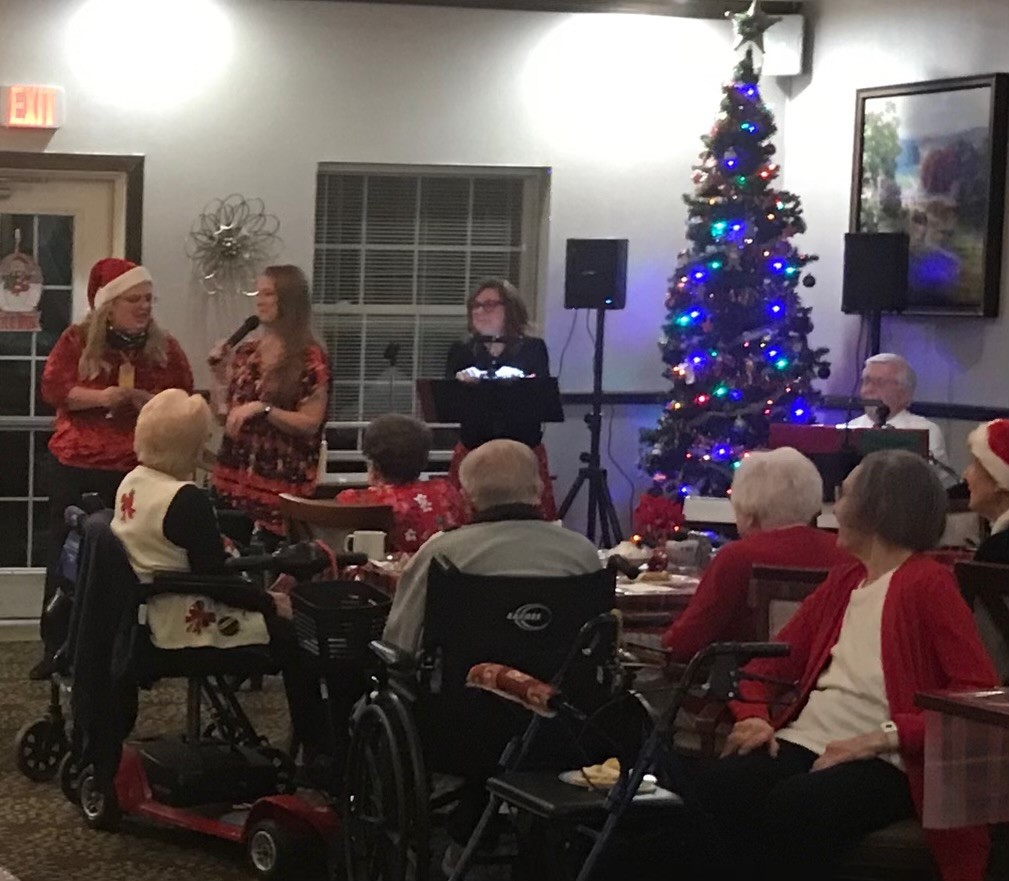
On December 8, the Montabaur Heights staff & residents gathered for their annual Christmas Party with great food, holiday music, presents, gingerbread house contest & a visit from Santa!
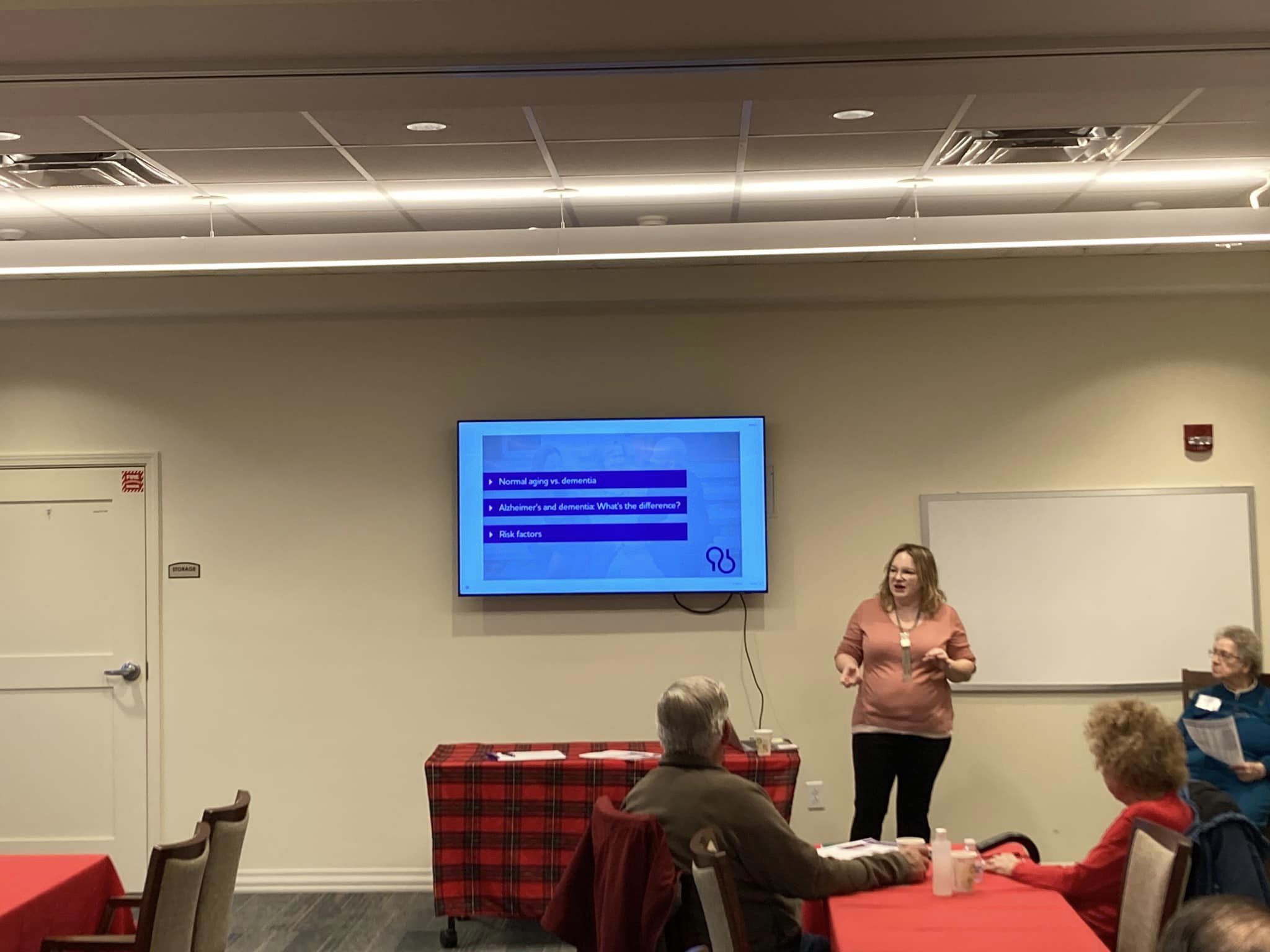
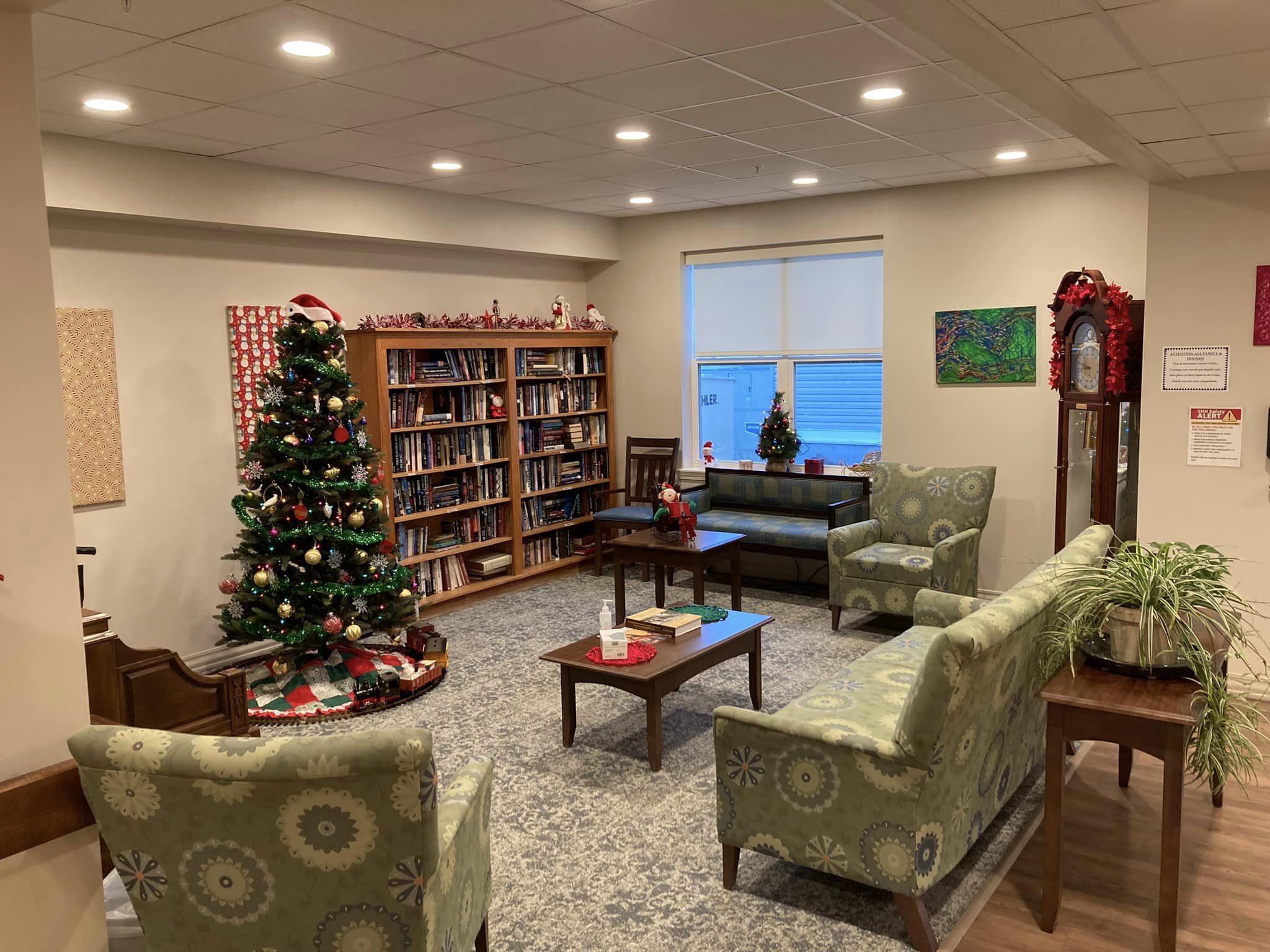
On December 2, the Sacred Heart Home Memory Care unit staff hosted its first community open house in a partnership with the Alzheimer’s Association of WNY.
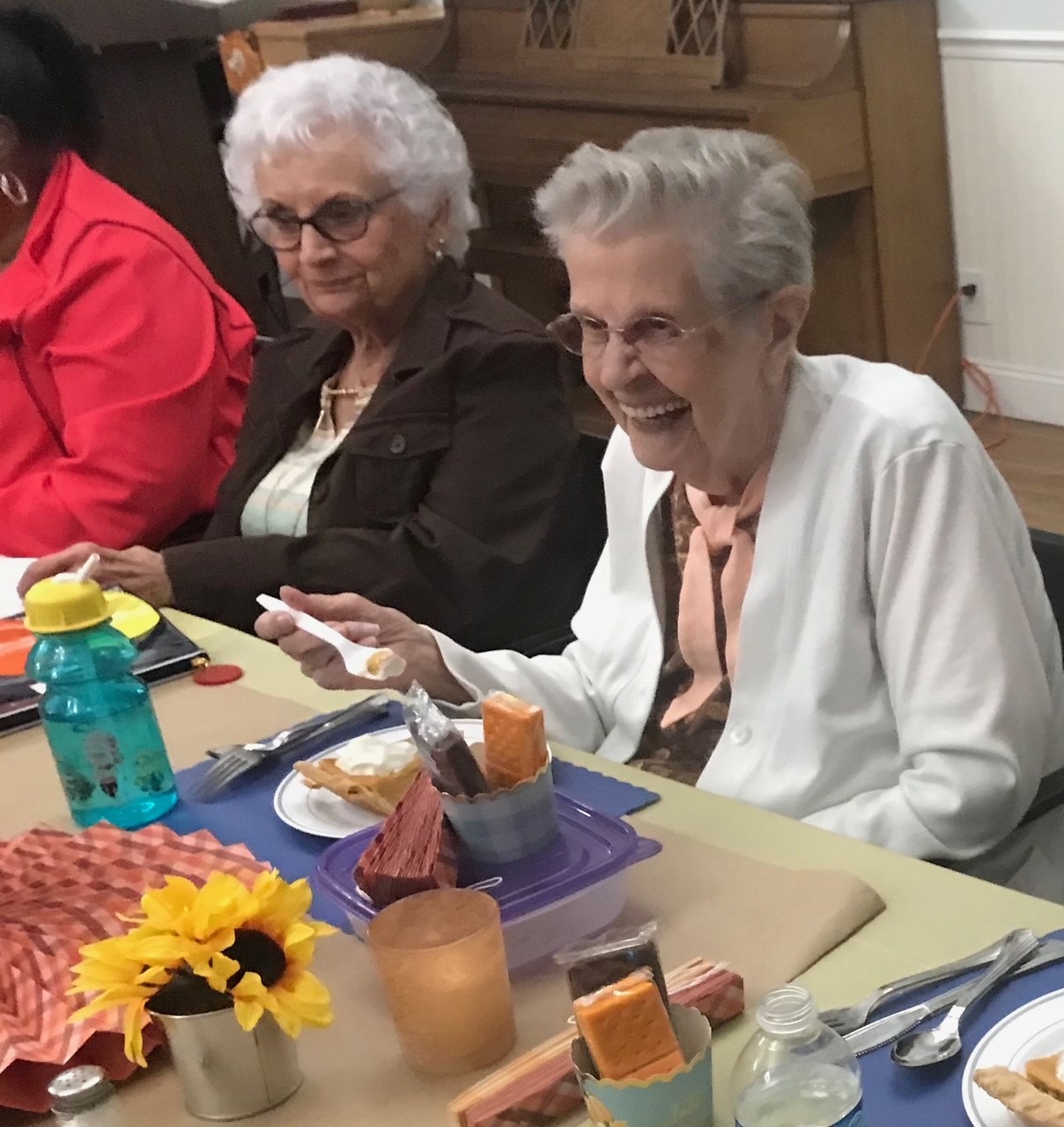
On November 19, Trier Woods residents enjoyed their November dinner party with a full Thanksgiving spread. Vince Dunston, Executive Director of Trier Woods, presented his “Trier Treasured” awards to residents for their contributions this year. Sentimental Journey finished the evening with a lovely musical performance!

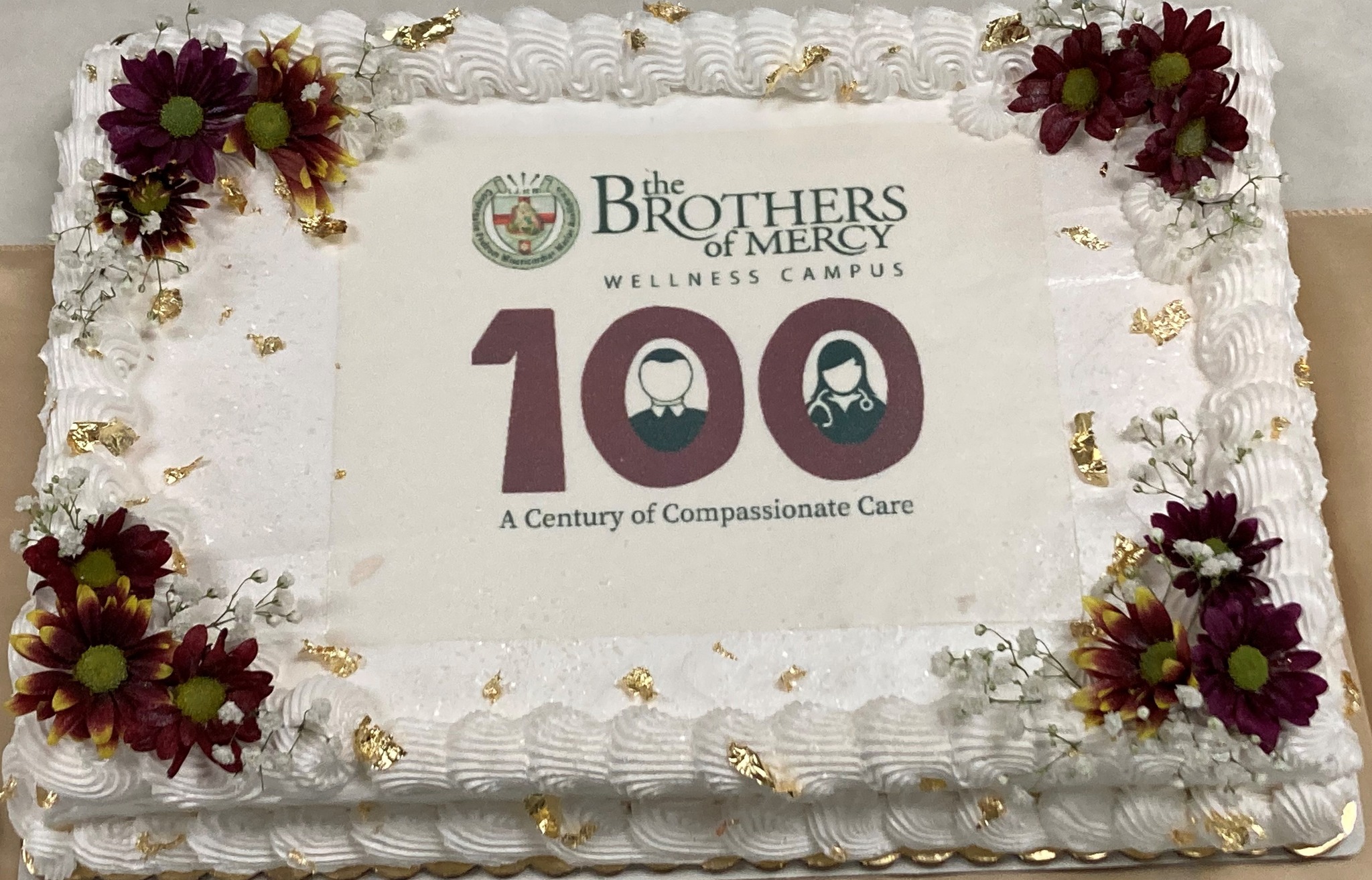
On November 16, the Skilled Nursing & Rehabilitation Center staff presented nine residents who are 100 or older with a special Centenarian Celebration. These residents were alive when The Brothers of Mercy was founded in Buffalo in 1924.
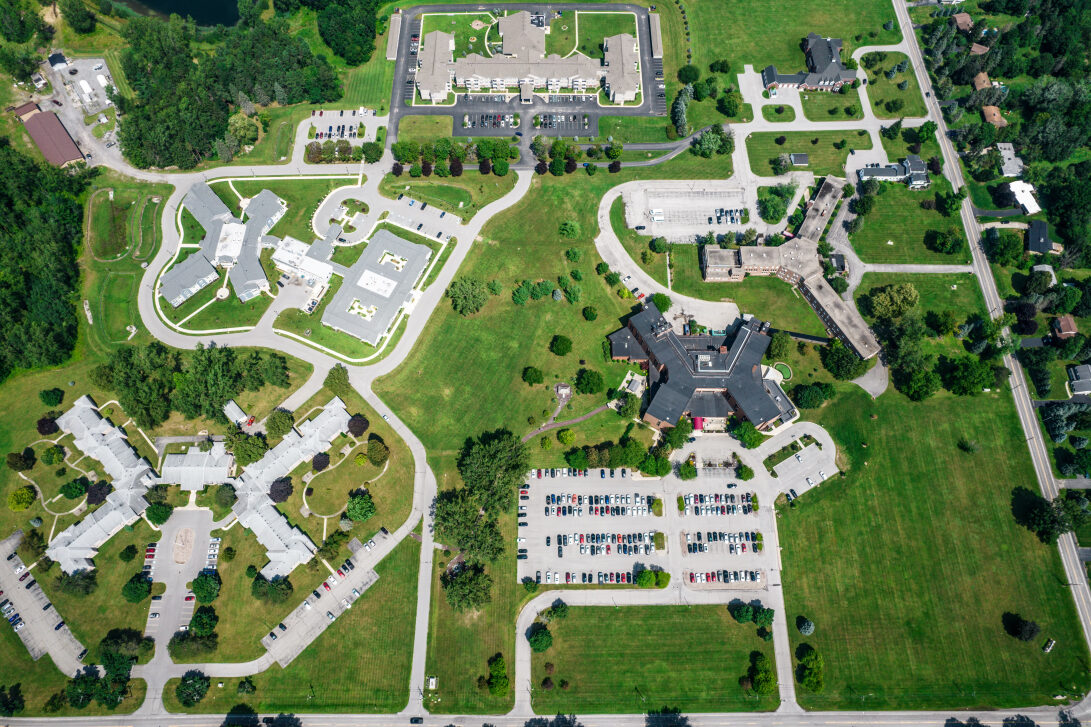
On November 14, The Brothers of Mercy Skilled Nursing & Rehabilitation Center received a High Performing rating from the U.S. News & World report for the 2024 Best Nursing Homes. This national recognition cited a variety of positive patient outcomes and ample staffing. Thank you to our employees & volunteers for their dedication to high-quality care that improves quality of life for our residents! Read here.
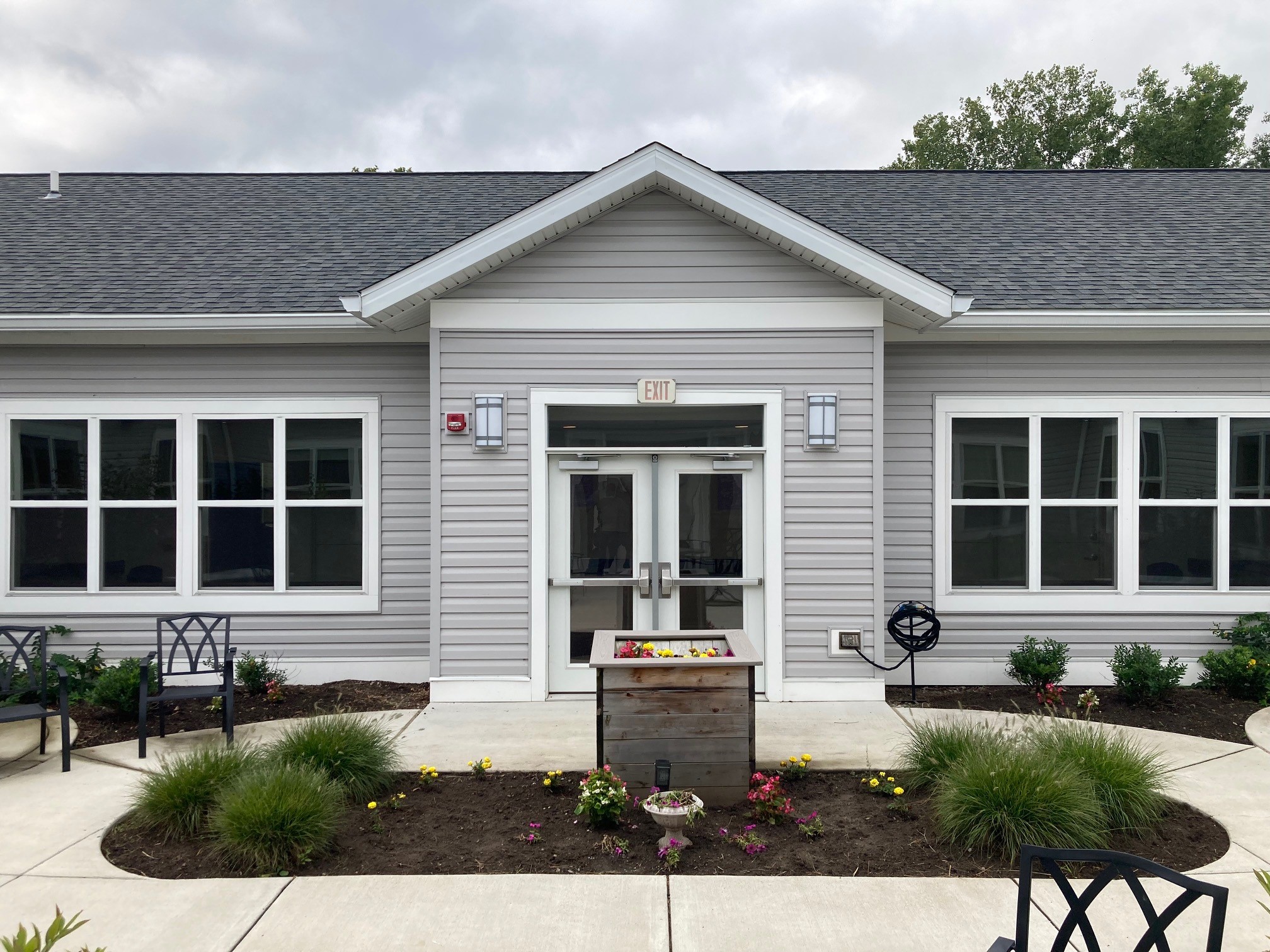
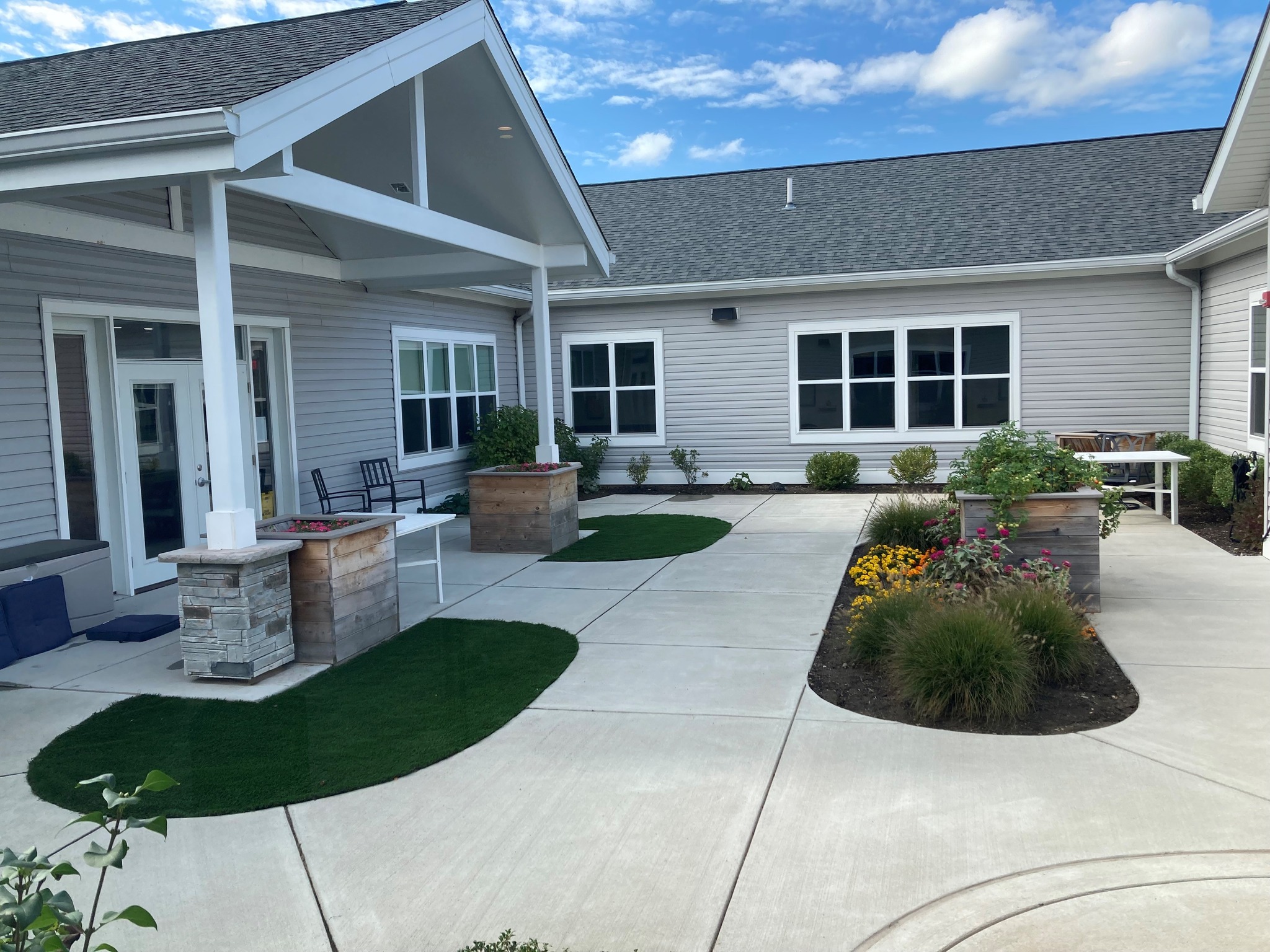
In October, Jeanne Blankenberg, a volunteer at Sacred Heart Home Assisted Living & Memory Care, suggested enhancing the Memory Care courtyards for the enjoyment and use by residents. She mentioned the project to her husband Greg Stamm, from the Stamm Law firm, who is the Trustee of the Rose A. Krayski Trust. Rose, who passed away in April, was an avid outdoors person who would be thrilled to know the courtyards were improved for residents to enjoy.
New perennials & turf areas were added this week, and phase two in the spring will include bed clean-up, trimming & new mulch. This project was funded to honor and remember Ms. Krayski.
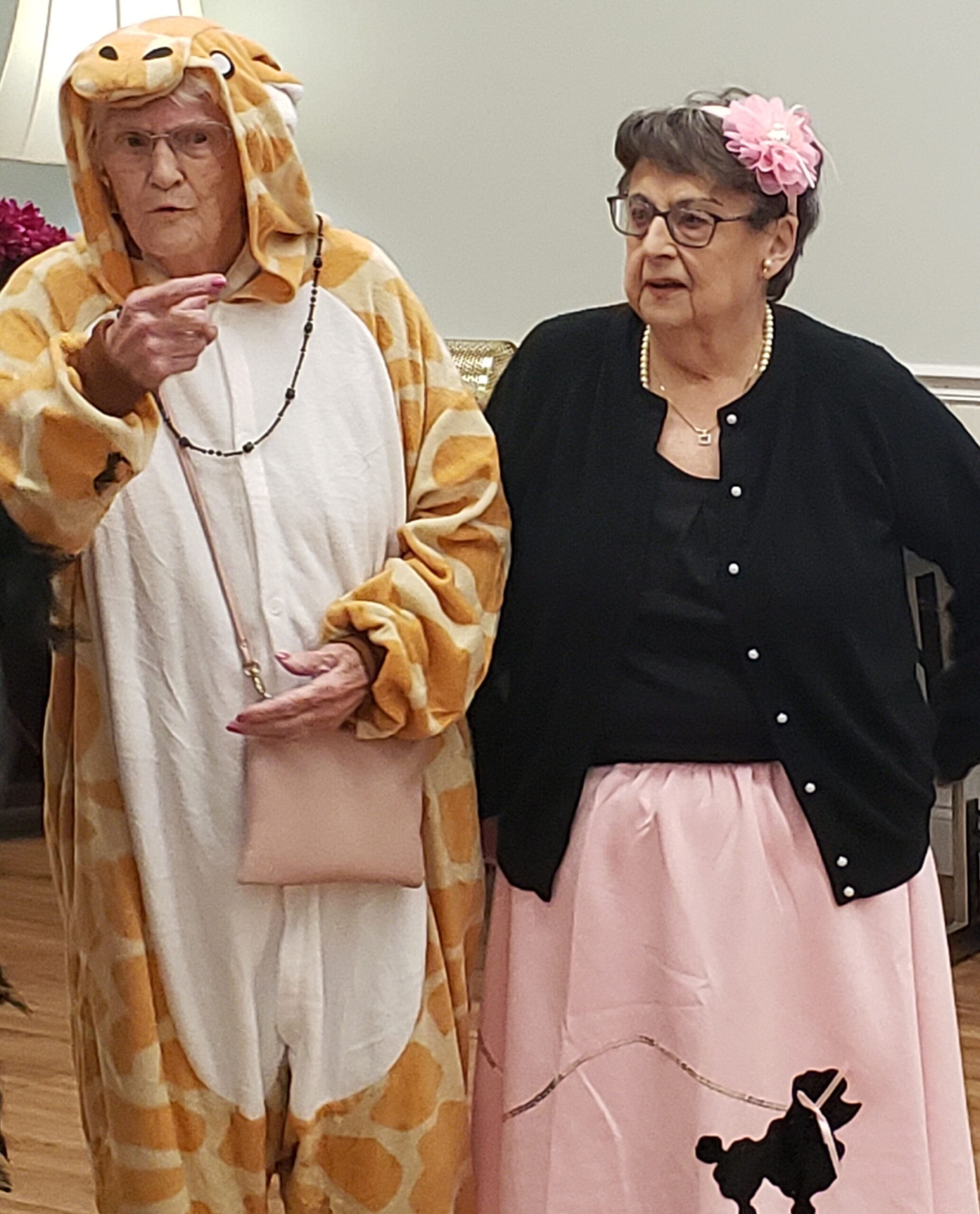
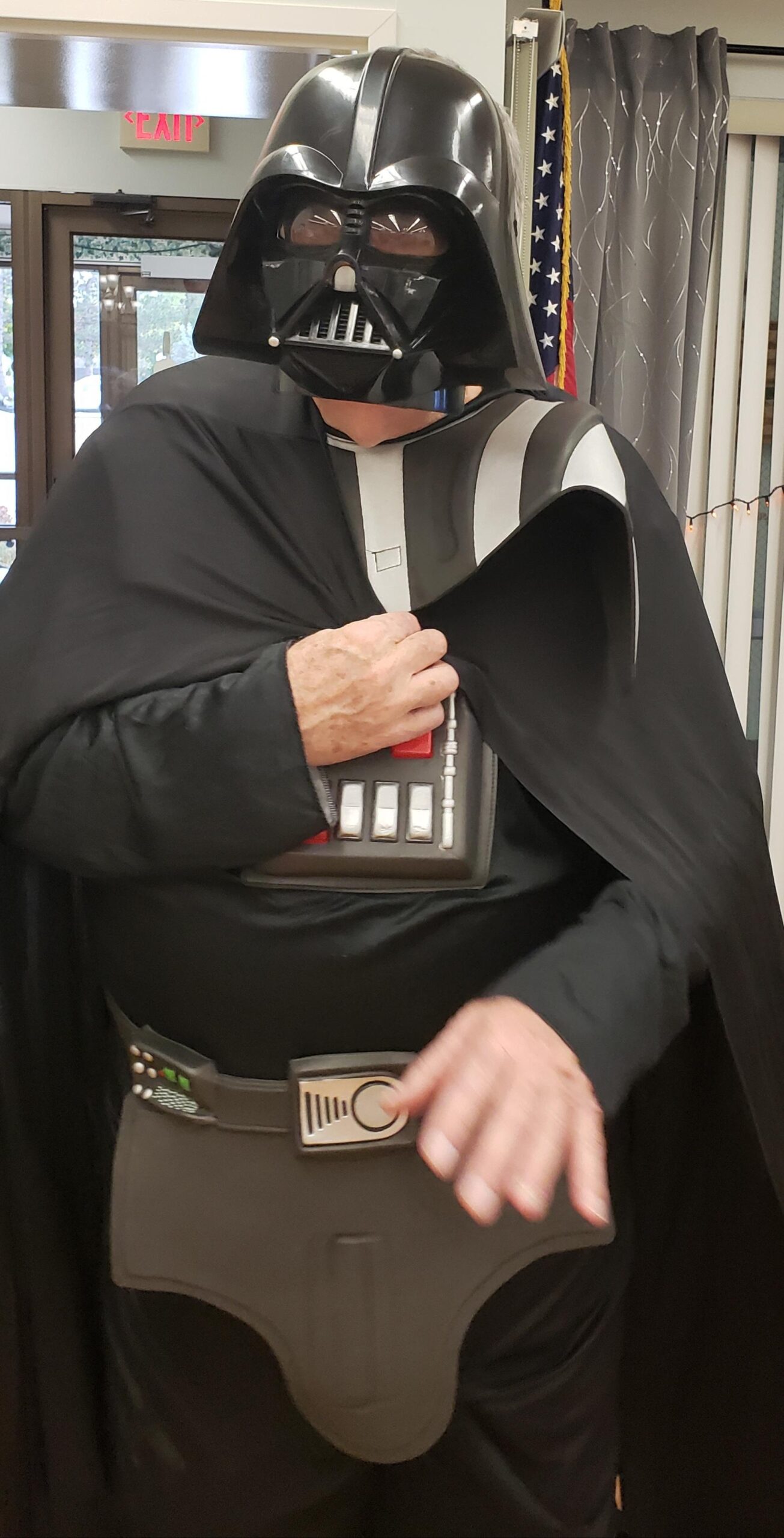
Residents from Trier Woods apartments gathered for their annual Halloween dinner & party on Thursday, Oct. 19. The evening featured dinner prepared and served by the staff, including meatloaf and Executive Director Vince Dunston’s homemade macaroni & cheese. The highlight was a costume contest featuring Darth Vader, 1950s Teeny Bopper, Biker Dude & World War II flying ace! Entertainment was provided by a member of Nerds Gone Wild.
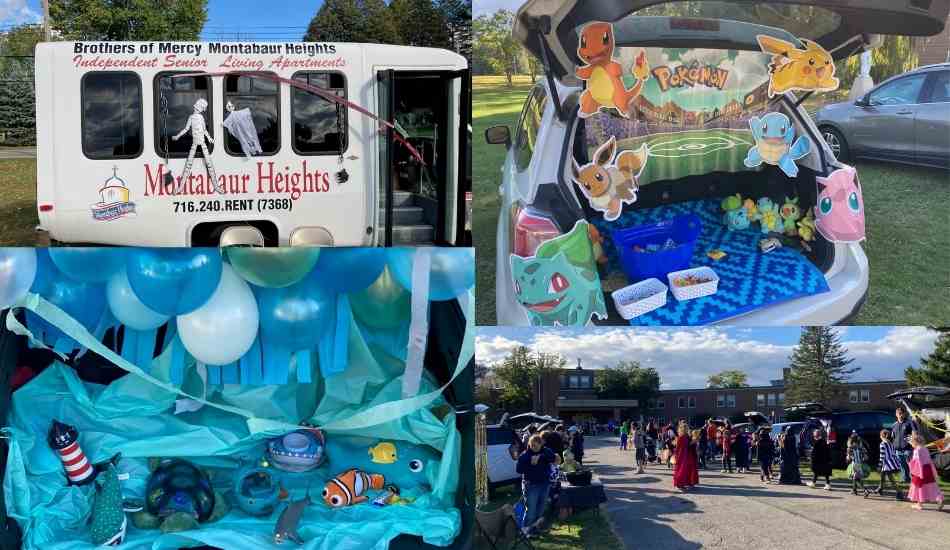
The Human Resources Department hosted the second annual “Trunk-or-Treat” community event in front of the Brothers of Mercy Center on Saturday, Oct. 7. More than 100 families attended as children trick-or-treated at all of the cars lined up at the main campus entrance. After a short parade, costume winners were chosen.
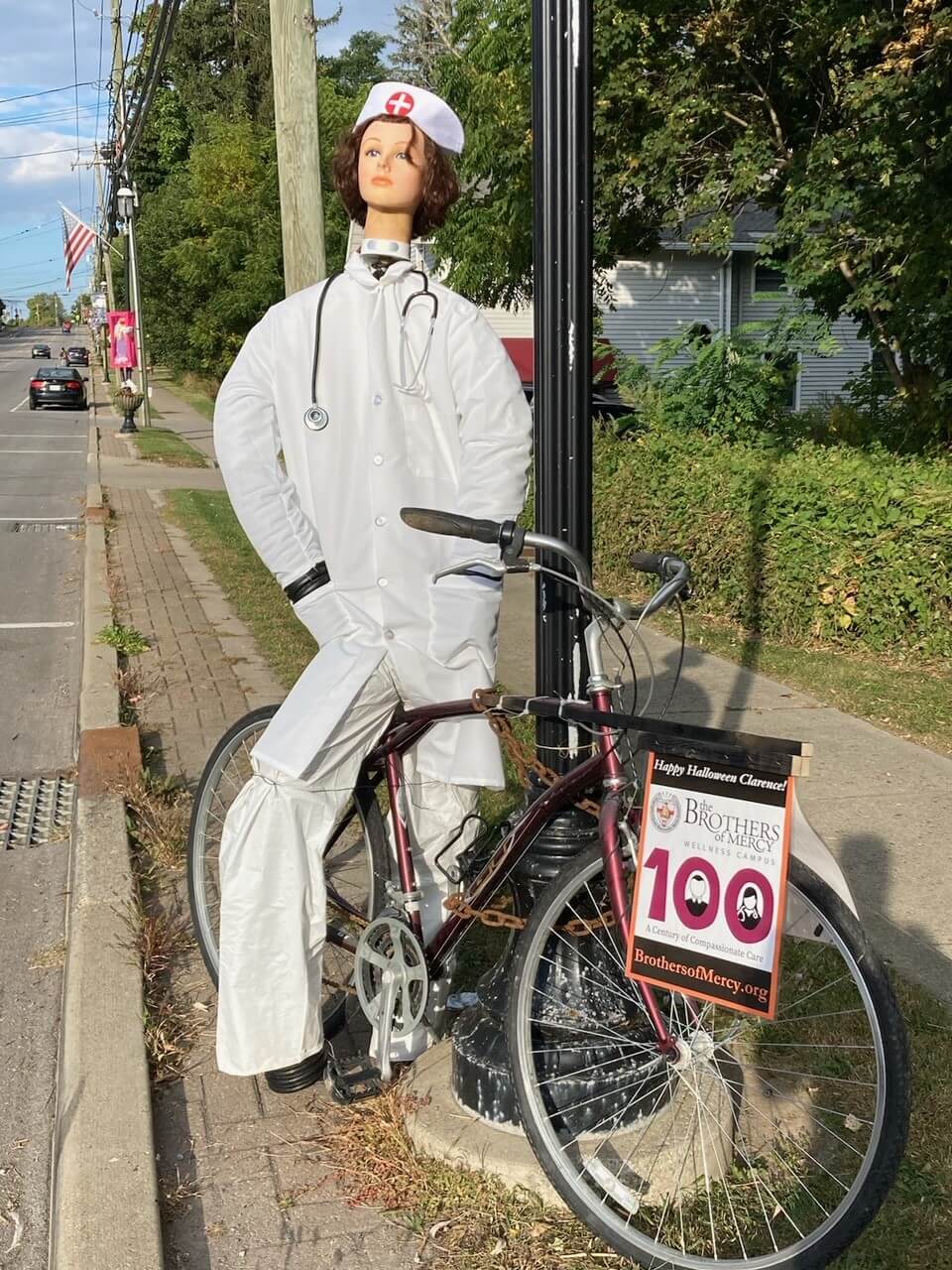
On Friday, Sept. 29, The Brothers of Mercy placed its “Nurse on a Bicycle” scarecrow on Main Street near Ransom to participate in the annual Clarence Hollow Association’s Scarecrow Contest.
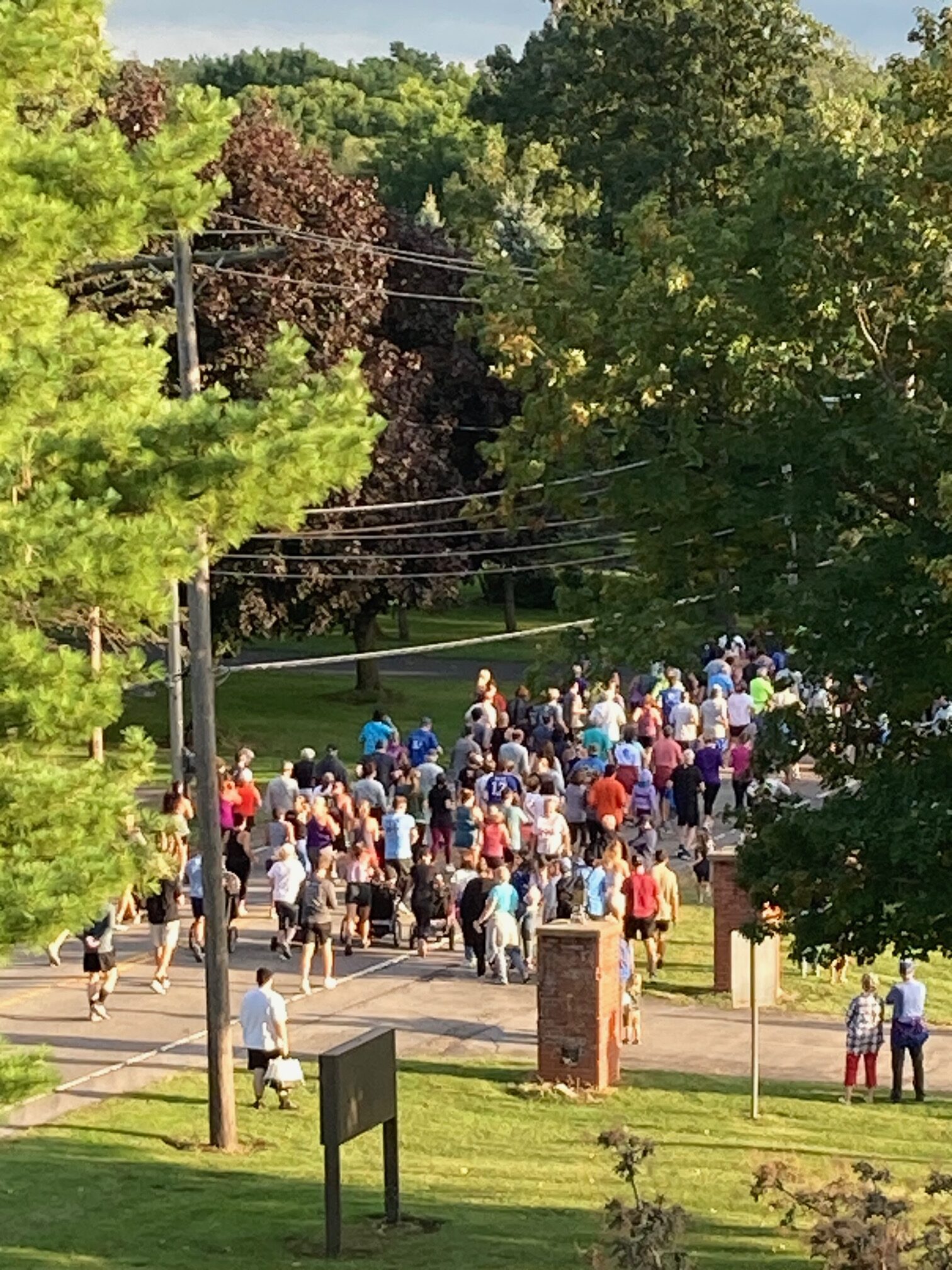
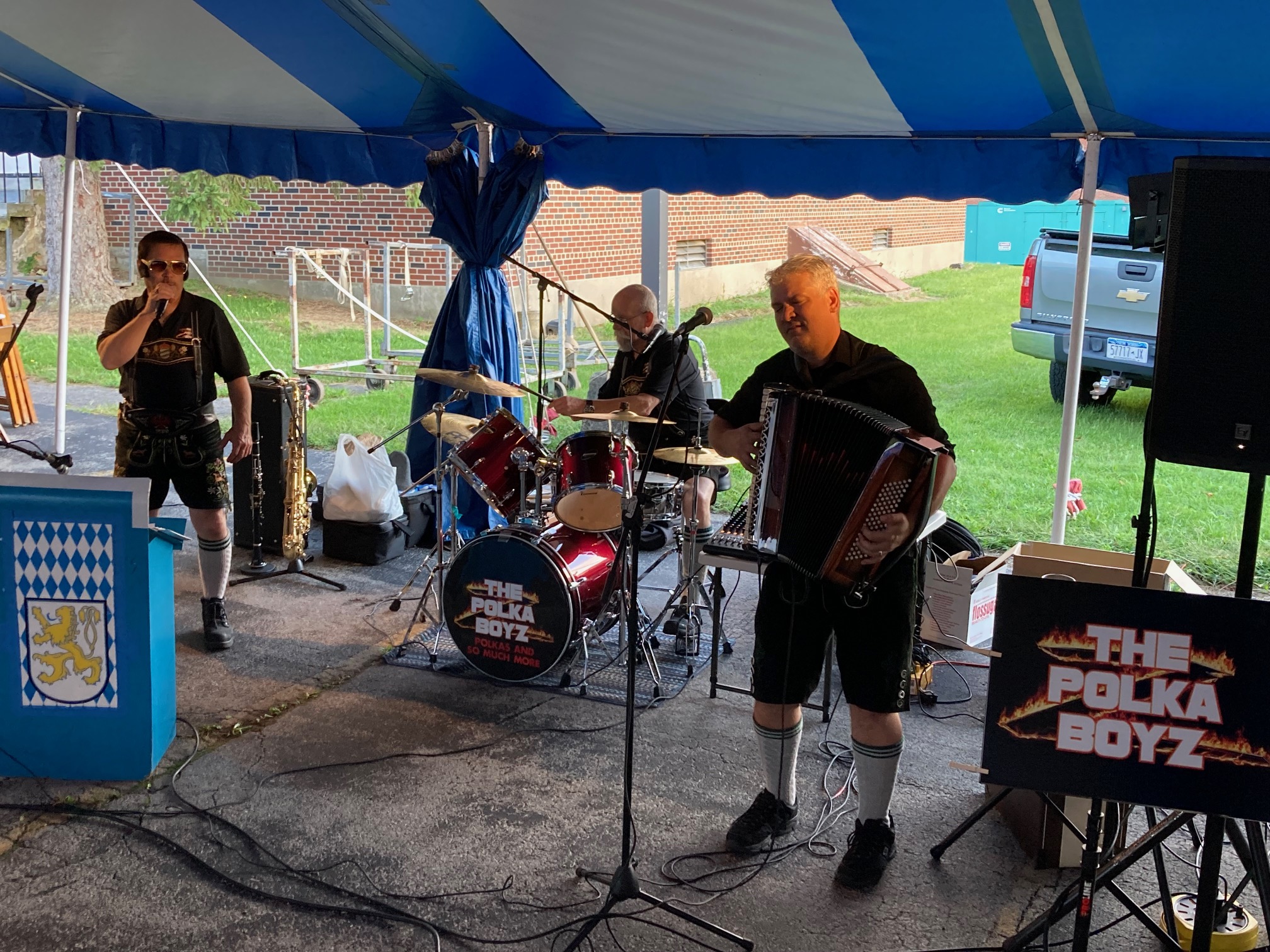
On Friday, September 8, The Brothers of Mercy hosted its annual Oktoberfest and 5K race. More than 250 runners and walkers participated and more than 500 attended the event, which featured The Polka Boyz and a gift basket raffle with more than 100 items.
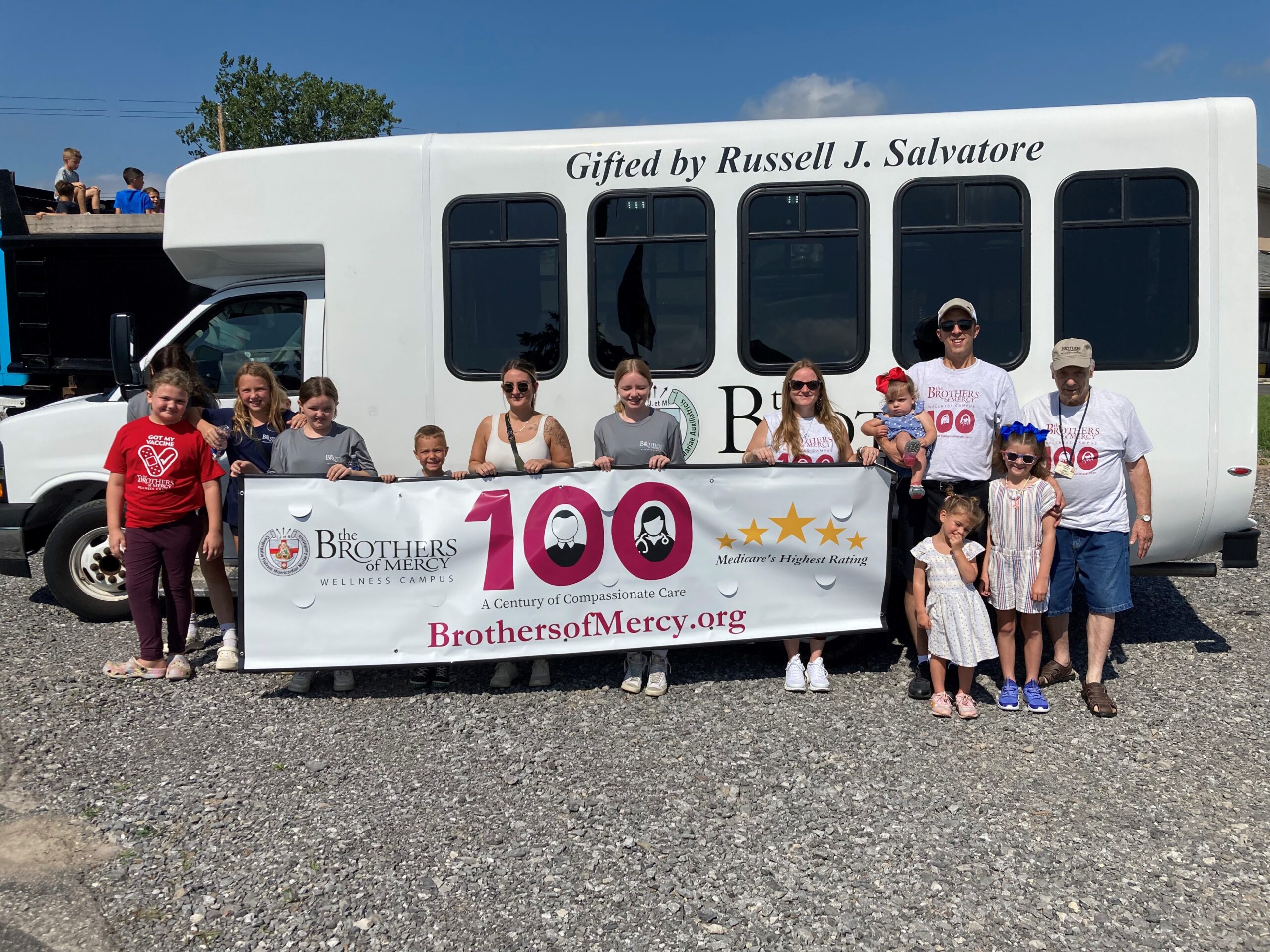
On Monday, September 4, The Brothers of Mercy staff marched in the Clarence Center Volunteer Fire Department’s Labor Day Parade.
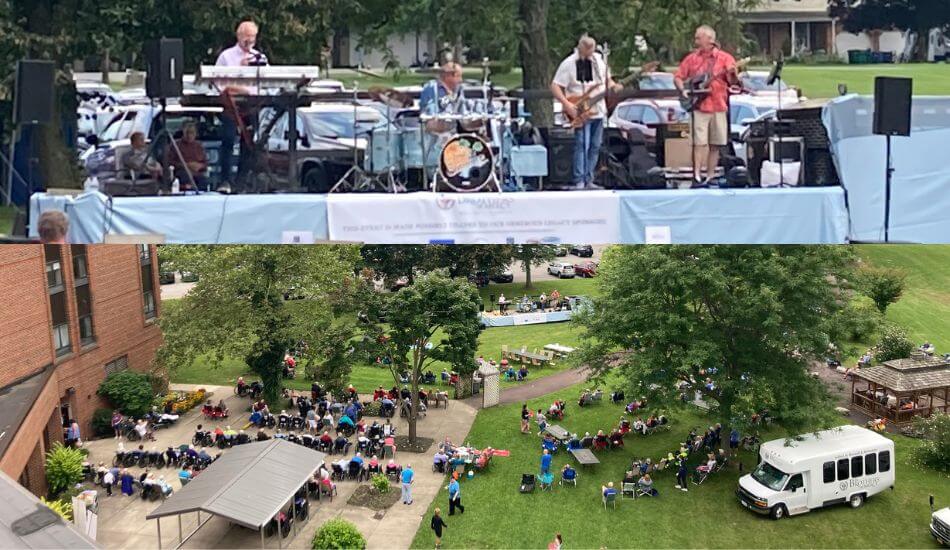
On Thursday, August 17, The Boys of Summer, members of The Buffalo Music Hall of Fame, performed a free community concert on the back lawn of the Skilled Nursing & Rehab Facility.
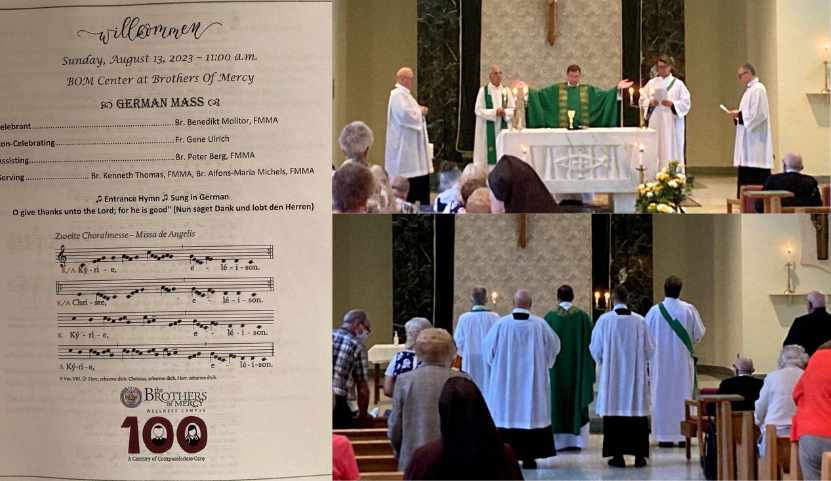
On Sunday, August 13, The Brothers held a German Mass in the Center Chapel with The Brothers from Trier, Germany, who were visiting to participate in the start of the centennial celebration.
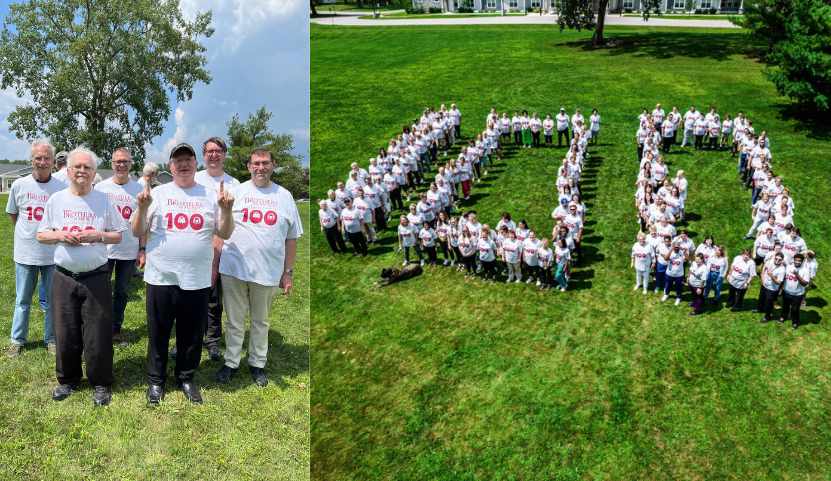
On Wednesday, August 9, The Brothers, staff, and volunteers gathered behind the skilled nursing home to kick off the year-long centennial commemoration by forming a 100 in the grass.
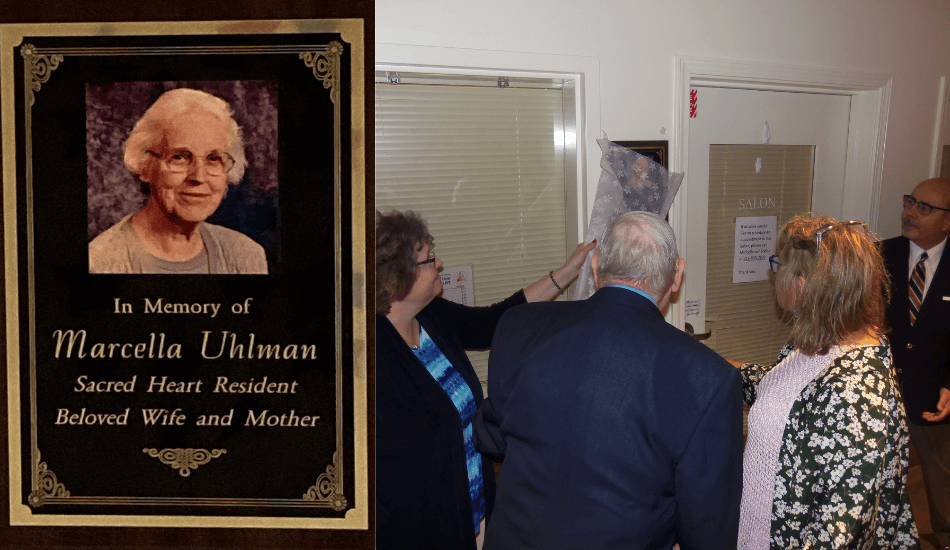
On Tuesday, July 18, 2023, the Sacred Heart Home staff was pleased to welcome the Uhlman family as they dedicated the beauty salon to Marcella Uhlman, who was a Sacred Heart resident. The dedication was made possible by a generous gift from the family, including Frank, her husband, and daughters, Maggie O’Toole and Liz Berg, to The Brothers of Mercy Wellness Campus. Thank you to the Uhlman family for this wonderful gift to honor Marcella!
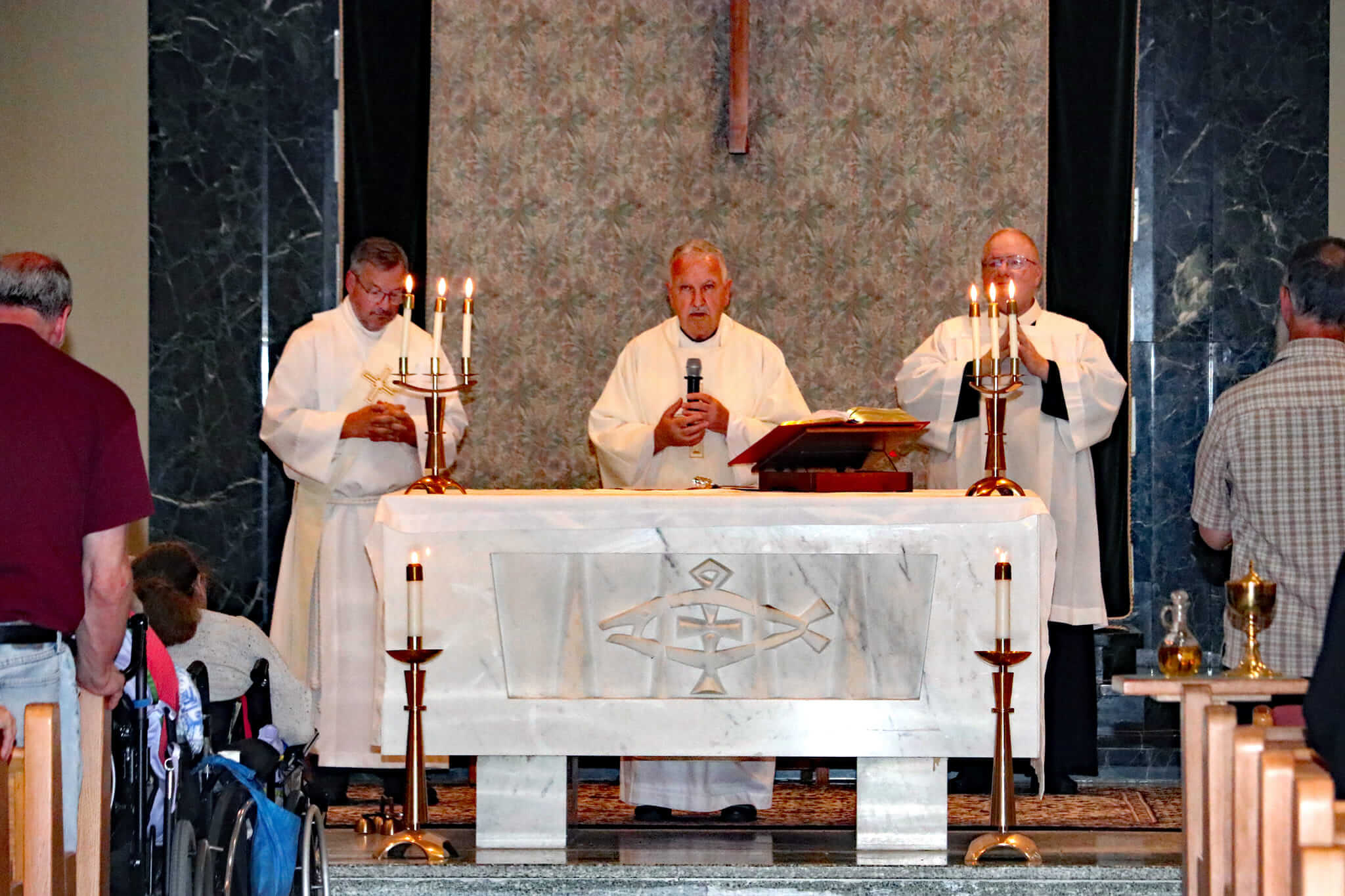
On Friday, June 23, 2023, The Brothers held a special Mass to commence the 2024 Centennial Celebration in the Chapel at the original Sacred Heart Home.
The Brothers of Mercy Centennial Timeline
1924-2024
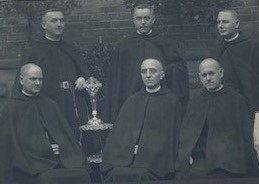
1924: In 1924, Bishop Turner welcomed six Brothers from Montabaur, Germany to the United States to launch what became a cornerstone of the Western New York senior care community. The Brothers initially reside in a local convent’s basement.

1925: The Brothers established residence on Cottage Street and began their mission of in-home nursing. Here they cared for male patients who needed around-the-clock care.
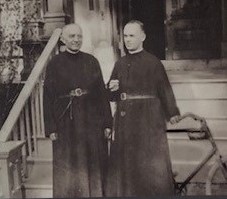
1935: In addition to providing residents at their infirmary on Cottage Street, the Brothers made medical house call visits. They traveled by bicycle in the rain or snow, day and night, providing care to patients from all backgrounds. Some patients were even priests. Payment was accepted in many forms – fruits, vegetables, animals, a “pay what you can” method, and sometimes nothing at all. The Brother’s made more than 76,000 house calls in their first 25 years.
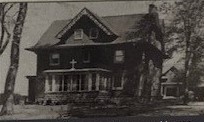
1938: As the demand for the Brothers’ spiritual care and medical skills grew, a second residence on Jewett Parkway was adopted.
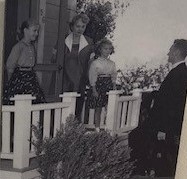
1949: The Brothers of Mercy celebrates 25 years of compassionate services in the Diocese of Buffalo on Sunday, June 26, 1949. On that special day in 1924, the small, yet mighty group of six Brothers arrived in the city, and prepares to spread their mission of care.
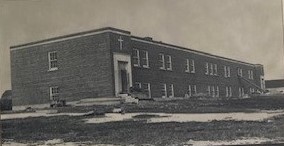
1950: The Brothers purchased 127 acres of farmland in Clarence, NY, which will eventually evolve into today’s “Brothers of Mercy Wellness Campus.” In 1951, ground is broken on the first wing of Sacred Heart Home, which housed 36 male patients.
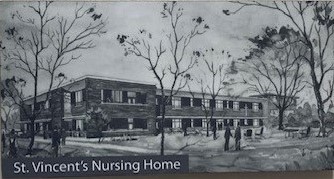
1951: St. Vincent’s Nursing Home is founded in Oklahoma City, OK, by Brother Servatius and three other Brothers from Buffalo. For approximately two decades, the home offered housing, care and spiritual counsel to men in need, eventually closing in the 1960s.
1959: Mercy Manor Retirement Home for men, formerly The Drake Hotel, opened in Kansas City, MS. Brothers Xavier and Jude were actively involved in this location. In 1966, the Catholic Diocese took it over, converting it to an alcohol rehabilitation center.
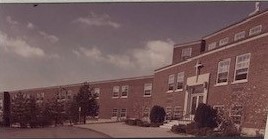
1963: Scared Heart Home added a south wing and new Chapel to the facility, adding 56 rooms and going from 36 to 92.
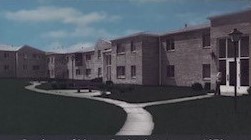
1972: As a way to expand the mission of serving those most in need, The Brothers of Mercy opens an affordable housing and independent living community for moderate-income seniors aged 55 and older.
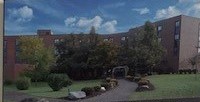
1974: The Brothers’ exclusive, renowned therapy programs earn them a reputation for pioneering rehabilitation in Western New York. As demand for access to these life-changing restorative therapies and treatment rises, the Brothers build a 240-bed Skilled Nursing & Rehabilitation Center, considered the region’s first-ever freestanding rehab center.
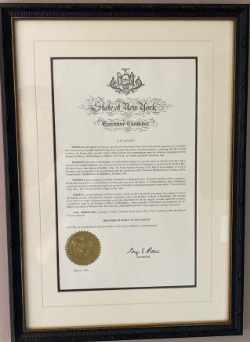
1999: On June 27. 1999, The Brothers of Mercy received a special 75th anniversary tribute and proclamation from New York State Governor George E. Pataki.
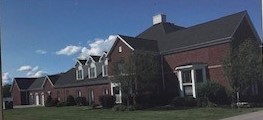
1999: Due to the need for a more modern facility, the Brothers migrated their residential quarters into a new residence on Ransom Road. They broke ground in 1999 and completed the home in 2000.
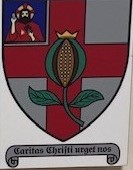
2006: The Brothers of Mercy of Montabaur celebrate 150 years as a Roman Catholic religious congregation.
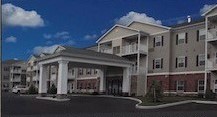
2014: Named after the Brothers of Mercy’s humble origins in Montabaur, Germany, this distinctive, all-inclusive independent senior living community begins construction in the fall of 2014 and opens its doors in early 2016.
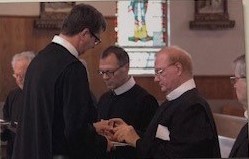
2016: The Clarence community of the Brothers of Mercy of Montabaur merge with the Trier, Germany-based community of the Brothers of Mercy of Mary Help of Christians. Joining the Trier Brothers was a natural fit due to the two congregations’ shared missions of caring for the sick and elderly.
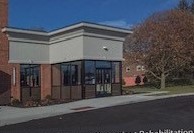
2018: The Russell J. Salvatore Outpatient Rehabilitation Clinic on the Wellness Campus opens in January 2018. The innovative physical, occupational and speech therapies The Brothers of Mercy pioneered through the decades are now available in this state-of-the-art facility to all adults over 18 in the entire Western New York community.

